| jump_all | jump_back | jump_next | jump_random | fig_id | title | instructor | credits | extra | reserved | class1_subjectcourse | class1_title | class1_meeting | class1_ethnic | class1_gened | class1_breadth | class1_level | class1_honors | class1_credit | class1_classnumber | class2_subjectcourse | class2_title | class2_meeting | class2_ethnic | class2_gened | class2_breadth | class2_level | class2_honors | class2_credit | class2_classnumber | class3_subjectcourse | class3_title | class3_meeting | class3_ethnic | class3_gened | class3_breadth | class3_level | class3_honors | class3_credit | class3_classnumber | class4_subjectcourse | class4_title | class4_meeting | class4_ethnic | class4_gened | class4_breadth | class4_level | class4_honors | class4_credit | class4_classnumber | fig |
|---|---|---|---|---|---|---|---|---|---|---|---|---|---|---|---|---|---|---|---|---|---|---|---|---|---|---|---|---|---|---|---|---|---|---|---|---|---|---|---|---|---|---|---|---|---|---|---|---|---|---|
| all | previous | next | random | 1 | Laboring for Revolution: An Introduction to the Life, Thought, and Legacy of Karl Marx | Joseph Bowling | 11 | English 175 | Literature and the Other Disciplines | Lec 1: TR 1:00-2:15 | Literature | Elementary | Honors Optional | 3 | 30236 | History Department 120 | Europe And The Modern World 1815 To The Present | LEC 1: TR 11:00-12:15 + DIS 308: F 12:05-12:55 | Humanities or Social Science | Elementary | Honors Optional | 4 | 26306 | Philosophy 101 | Introduction to Philosophy | LEC 1: MWF 9:55-10:45+ DIS 302: T 9:55-10:45 | Humanities or Social Science | Elementary | 4 | 22961 | 2021fall01 | |||||||||||||||||||
| all | previous | next | random | 2 | Altruism and Selfishness | Elliott Sober | 9 | Philosophy 104 | Altruism and Selfishness | LEC 1: TR 1:00–2:15 | Humanities or Social Science | Elementary | 3 | 29463 | Sociology 170 | Population Problems | LEC 1: MW 9:55-10:45 + DIS 302: M 2:25-3:15 | Ethnic Studies | Social Science | Elementary | 3 | 19796 | Anthropology 105 | Principles of Biological Anthropology | LEC 6: MW 1:20–2:10 + DIS 306: F 1:20-2:10 | Biological Science | Elementary | Honors Optional | 3 | 18505 | 2021fall02 | |||||||||||||||||||
| all | previous | next | random | 3 | Art and Artists: Foundations of Contemporary Practice (Option 1) | John Baldacchino | 9 or 10 | Art 508 is optional for an additional credit (10 total) | for students advised by the School of Education | Art Department 108 | Foundations of Contemporary Art | LEC 1: TR 9:55-10:45 + DIS 301: T 8:50–9:40 | Humanities | Elementary | 3 | 11798 | Art Department 102 | Two-Dimensional Design | LAB 4: TR 11:00–1:30 | 3 | 28541 | Art Department 212 | Drawing Methods and Concepts | LAB 1: MW 1:45–4:15 | 3 | 11805 | Art Department 508 | Colloquium in Art / Visiting Artist Series | LEC 1: W 5:00–6:15 | 1 | 11936 | 2021fall03 | ||||||||||||||||||
| all | previous | next | random | 4 | Art and Artists: Foundations of Contemporary Practice (Option 2) | John Baldacchino | 9 or 10 | Art 508 is optional for an additional credit (10 total) | for students advised by the School of Education | Art Department 108 | Foundations of Contemporary Art | LEC 1: TR 9:55-10:45 + DIS 307: R 8:50–9:40 | Humanities | Elementary | 3 | 11905 | Art Department 102 | Two-Dimensional Design | LAB 2: MW 1:45–4:15 | 3 | 23727 | Art Department 212 | Drawing Methods and Concepts | LAB 3: TR 11:00–1:30 | 3 | 11807 | Art Department 508 | Colloquium in Art / Visiting Artist Series | LEC 1: W 5:00–6:15 | 1 | 11936 | 2021fall04 | ||||||||||||||||||
| all | previous | next | random | 5 | Art and Artists: Foundations of Contemporary Practice (Option 3) | John Baldacchino | 9 or 10 | Art 508 is optional for an additional credit (10 total) | for students advised by the School of Education | Art Department 108 | Foundations of Contemporary Art | LEC 1: TR 9:55-10:45 + DIS 303: T 12:05–12:55 | Humanities | Elementary | 3 | 11800 | Art Department 102 | Two-Dimensional Design | LAB 6: TR 1:45–4:15 | 3 | 34248 | Art Department 212 | Drawing Methods and Concepts | LAB 2: MW 11:00–1:30 | 3 | 11806 | Art Department 508 | Colloquium in Art / Visiting Artist Series | LEC 1: W 5:00–6:15 | 1 | 11936 | 2021fall05 | ||||||||||||||||||
| all | previous | next | random | 6 | Art and Ornament in Archaeology | Jonathan Mark Kenoyer | 9 | Anthropology 120 | Art and Archaeology | SEM 1: F 1:20–3:50 | Elementary | Honors Optional | 3 | 30030 | Geography 139 | Global Environmental Issues | LEC 1: LEC 1: MW 2:25-3:15 + DIS 301: T 1:20-2:10 | Social Science | Elementary | 3 | 18841 | Gender and Women’s Studies 102 | Gender, Women, and Society in Global Perspective | LEC 1: MW 9:55-10:45 + DIS 303: W 1:20-2:10 | Social Science | Elementary | 3 | 19496 | 2021fall06 | |||||||||||||||||||||
| all | previous | next | random | 7 | The Atomic Bomb in American and Japanese History | Louise Young | 11 | History Department 200 | The Atomic Bomb in American and Japanese History | LEC 7: T 1:20-3:15 | Humanities or Social Science | Intermediate | Honors Optional | 3 | 31199 | Philosophy 101 | Introduction to Philosophy | LEC 2: MWF 11:00-11:50 + DIS 324: R 1:20-2:10 | Humanities or Social Science | Elementary | 4 | 23079 | Political Science 140 | Introduction to International Relations | LEC 1: MW 4:00-5:15 + DIS 303: R 2:25-3:15 | Social Science | Elementary | 4 | 14932 | 2021fall07 | ||||||||||||||||||||
| all | previous | next | random | 8 | Audiotopia: Reading Race and Music | Yanie Fecu | 10 | English 177 | Audiotopia: Reading Race and Music | LEC 4: TR 2:30-3:45 | Literature | Elementary | 3 | 36486 | Sociology 134 | Sociology of Race and Ethnicity in the United States | LEC 1: TR 4:00-5:15 + DIS 301: M 9:55–10:45 | Ethnic Studies | Social Science | Elementary | 4 | 23715 | Afro-American Studies 231 | Introduction to Afro-American History | LEC 1: TR 9:55-10:45 + DIS 303: F 9:55-10:45 | Ethnic Studies | Social Science | Elementary | 3 | 27901 | 2021fall08 | |||||||||||||||||||
| all | previous | next | random | 9 | Biology of Vision | Bikash Pattnaik | 10 | Students must have satisfied the equivalent of Mathematics 112 requirement for Chemistry 103. | Interdisciplinary Courses (L&S) 101 | Biology of Vision | SEM 1: MWF 1:20-2:10 | Biological Science | Elementary | 3 | 23820 | Psychology 202 | Introduction to Psychology | LEC 1: TR 1:00-2:15 | Social Science | Elementary | 3 | 14755 | Chemistry 103 | General Chemistry I | LEC 5: TR 11:00-12:15 + DIS 393: WF 12:05-12:55 + LAB 693: W 5:40-8:40 | Physical Science | Elementary | 4 | 16736 | 2021fall09 | ||||||||||||||||||||
| all | previous | next | random | 10 | Classical Myth and Modern American Culture | Ron Harris | 10 | English 155 | Classical Myth and Modern Literature | LEC 1: MWF 1:20–2:10 | Literature | Elementary | 3 | 19476 | Integrated Liberal Studies 203 | Western Culture: Literature and the Arts I | LEC 1: MW 11:00–11:50 + DIS 306: F 11:00–11:50 | Literature | Elementary | 3 | 14568 | Latin (Classics) 103 | Elementary Latin | LEC 3: MTWR 2:25-3:15 | Elementary | 4 | 30415 | 2021fall10 | ||||||||||||||||||||||
| all | previous | next | random | 11 | Diversity in Special Education | Kimber Wilkerson | 10 | Includes 25 hours of community-based learning outside the classroom. | Rehabilitation Psychology and Special Education 200 | Critical Issues in Special Education | LEC 2: T 2:25–5:25 | 3 | 26692 | Rehabilitation Psychology and Special Education 300 | Individuals with Disabilities | LEC 2: W 4:00-7:00 + FLD 302 | Elementary | 3 | 11830 | Sociology 134 | Sociology of Race and Ethnicity in the United States | LEC 2: MWF 11:00-11:50 + DIS 341: T 12:05-12:55 | Ethnic Studies | Social Science | Elementary | 4 | 34581 | 2021fall11 | ||||||||||||||||||||||
| all | previous | next | random | 12 | Earth Partnership, Indigenous Arts & Sciences: Restoration Education and Stewardship | Maria Moreno & Cheryl Bauer-Armstrong | 9 | Interdisciplinary Courses (L&S) 106 | Earth Partnership: Indigenous Arts & Sciences | SEM 1: R 2:25-5:25 | Social Science | Elementary | 3 | 36398 | Environmental Studies 112 | Environmental Studies: The Social Perspective | LEC 1: MW 11:00-11:50 + DIS 303: M 3:30-4:20 | Social Science | Elementary | 3 | 25124 | American Indian Studies 100 | Introduction to American Indian Studies | LEC 1: MW 2:25-3:15 + DIS 309: F 11:00-11:50 | Ethnic Studies | Social Science | Elementary | 3 | 35653 | 2021fall12 | ||||||||||||||||||||
| all | previous | next | random | 13 | Exploring Biology (Option 1) | Cara Theisen | 8 | Students must have received placement into Mathematics 112. | Integrated Science 100 | Exploring Biology | LEC 1 + DIS 301: M 2:25–4:20 | Biological Science | Elementary | 2 | 35515 | English 100 | Introduction to College Composition | LEC 51: TR 2:30-3:45 | Communication Part A | Elementary | 3 | 19545 | Mathematics 112 | Algebra | LEC 6: TR 11:00-12:15 | Quantitative Reasoning Part A | Elementary | 3 | 28502 | 2021fall13 | ||||||||||||||||||||
| all | previous | next | random | 14 | Exploring Biology (Option 2) | Cara Theisen | 9 | Students must have satisfied the equivalent of Mathematics 112 requirement for Chemistry 103. | Integrated Science 100 | Exploring Biology | LEC 1 + DIS 302: M 2:25–4:20 | Biological Science | Elementary | 2 | 35516 | Anthropology 105 | Principles of Biological Anthropology | LEC 11: MW 1:20-2:10 + DIS 301: W 2:25–3:15 | Biological Science | Elementary | Honors Optional | 3 | 14069 | Chemistry 103 | General Chemistry I | LEC 2: MWF 11:00–11:50 + DIS 324: TR 11:00–11:50 + LAB 624: R 2:25–5:25 | Physical Science | Elementary | 4 | 14230 | 2021fall14 | |||||||||||||||||||
| all | previous | next | random | 15 | Exploring Biology (Option 3) | Cara Theisen | 9 | Students must have satisfied the equivalent of Mathematics 112 requirement for Chemistry 103. | Integrated Science 100 | Exploring Biology | LEC 1 + DIS 303: M 2:25–4:20 | Biological Science | Elementary | 2 | 35517 | Interdisciplinary Courses (SOHE) 201 | Belonging, Purpose, and the Ecology of Human Happiness: EcoYou | LEC 1: MW 1:20-2:10 + DIS 307: F 1:20–2:10 | Social Science | Elementary | 3 | 26792 | Chemistry 103 | General Chemistry I | LEC 7: TR 2:30–3:45 + DIS 463: WF 9:55–10:45 + LAB 763: W 2:25-5:25 | Physical Science | Elementary | 4 | 33744 | 2021fall15 | ||||||||||||||||||||
| all | previous | next | random | 16 | Exploring Biology (Option 4) | Cara Theisen | 9 | Students must have satisfied the equivalent of Mathematics 112 requirement for Chemistry 103. | Integrated Science 100 | Exploring Biology | LEC 1 + DIS 304: M 2:25–4:20 | Biological Science | Elementary | 2 | 35518 | Gender and Women’s Studies 103 | Gender, Women, Bodies, and Health | LEC 1: MW 11:00-11:50 + DIS 303: W 2:25-3:15 | Natural Science | Elementary | 3 | 25085 | Chemistry 103 | General Chemistry I | LEC 1: MWF 8:50–9:40 + DIS 303: TR 9:55–10:45 + LAB 603: T 2:25–5:25 | Physical Science | Elementary | 4 | 14213 | 2021fall16 | ||||||||||||||||||||
| all | previous | next | random | 17 | Food Cultures of Italy | Grazia Menechella | 10 | Literature in Translation 410 | Food Cultures of Italy | LEC 1: TR 11:00–12:15 | Literature | Intermediate | 3 | 36543 | Horticulture 120 | Survey of Horticulture | LEC 1: MW 1:20-2:10 + LAB 304: F 1:20-3:15 | Biological Science | Elementary | 3 | 11032 | Italian 101 | First Semester Italian | LEC 2: MTWR 9:55-10:45 | Elementary | Honors Optional | 4 | 30599 | 2021fall17 | |||||||||||||||||||||
| all | previous | next | random | 18 | Freshwater: Past, Present, and Future | Jake Vander Zanden | 8 | Zoology 400 | Freshwater: Past, Present, and Future | LEC 3: R 1:20-3:15 | Biological Science | Intermediate | 2 | 34170 | Geography 120 | Introduction To The Earth System | LEC 1: MW 11:00-11:50 + DIS 304: T 1:20–2:10 | Physical Science | Elementary | Honors Optional | 3 | 16706 | Zoology 101 | Animal Biology | LEC 2: MWF 12:05-12:55 + Discussion Section Optional | Biological Science | Elementary | Honors Optional | 3 | 15228 | 2021fall18 | |||||||||||||||||||
| all | previous | next | random | 19 | Game Design | Krista-Lee Malone | 10 | Curriculum and Instruction 357 | Game Design I | SEM 1: T 1:30–4:15 | Intermediate | 3 | 26720 | Sociology 134 | Sociology of Race and Ethnicity in the United States | LEC 3: MWF 12:05-12:55 + DIS 362: R 9:55-10:45 | Ethnic Studies | Social Science | Elementary | 4 | 34588 | Communication Arts 200 | Introduction to Digital Communication | LEC 1: TR 12:05-12:55 + LAB 304: F 9:55-10:45 | Humanities or Social Science | Elementary | 3 | 34168 | 2021fall19 | |||||||||||||||||||||
| all | previous | next | random | 21 | Global Biodiversity and the Sixth Mass Extinction | Daniel Young | 9 | Students must have satisfied the equivalent of Mathematics 112 requirement for Chemistry 103. | Entomology 375 | Biodiversity and the Sixth Extinction | LEC 1: R 9:00–10:45 | 2 | 22924 | Entomology 201 | Insects and Human Culture | LEC 1: M 12:05-12:55 | Biological Science | Elementary | Honors Optional | 3 | 10030 | Chemistry 103 | General Chemistry I | LEC 1: MWF 8:50-9:40 + DIS 304: TR 11:00–11:50 + LAB 604: T 2:25–5:25 | Physical Science | Elementary | 4 | 14214 | 2021fall21 | |||||||||||||||||||||
| all | previous | next | random | 22 | Global Reproductive Politics | Emily Callaci | 9 | History Department 200 | Reproductive Politics | LEC 2: M 1:20–3:15 | Humanities or Social Science | Intermediate | Honors Optional | 3 | 34023 | Gender and Women’s Studies 103 | Gender, Women, Bodies, and Health | LEC 1: MW 11:00-11:50 + DIS 301: W 1:20-2:10 | Natural Science | Elementary | 3 | 25084 | Sociology 170 | Population Problems | LEC 1: MW 9:55-10:45 + DIS 311: W 2:25-3:10 | Ethnic Studies | Social Science | Elementary | 3 | 19805 | 2021fall22 | |||||||||||||||||||
| all | previous | next | random | 23 | Globalism, World Regions, and Globalizing Education | Li-Ching Ho | 10 | Curriculum and Instruction 292 | Globalizing Education | SEM 1: MW 2:30–3:45 | Elementary | 3 | 29224 | International Studies 101 | Introduction to International Studies | LEC 1: TR 11:00-12:15 + DIS 301: F 9:55-10:45 | Social Science | Elementary | 4 | 18381 | Anthropology 104 | Cultural Anthropology and Human Diversity | LEC 12: TR 9:55–10:45 + DIS 312: W 9:55-10:45 | Ethnic Studies | Social Science | Elementary | 3 | 14064 | 2021fall23 | |||||||||||||||||||||
| all | previous | next | random | 24 | Healthcare and Engineering | Tracy Puccinelli | 10 | Students must have satisfied the equivalent of Mathematics 112 requirement for Chemistry 103. | for “direct admit” students in the College of Engineering | Interdisciplinary Courses (Engineering) 170 | Design Practicum | LEC 2: R 11:00-11:50 + LAB 301: T 7:45–10:45 | 3 | 27914 | Chemistry 103 | General Chemistry I | LEC 1: MWF 8:50-9:40 + DIS 301: MW 9:55-10:45 + LAB 601: M 2:25-5:25 | Physical Science | Elementary | 4 | 14211 | Religious Studies 102 | Exploring Religion in Sickness and Health | LEC 1: MW 11:00-11:50 + DIS 310: R 1:20-2:10 | Humanities or Social Science | Elementary | 3 | 30516 | 2021fall24 | |||||||||||||||||||||
| all | previous | next | random | 25 | Hispanic Literatures through the Perspective of Gender | Ksenija Bilbija | 9 | Choose a Spanish class. Spanish 226: Students must have received placement into Spanish 226 or completion of Spanish 204 or equivalent. Spanish 311: Placement into Spanish 311 or completion of Spanish 226 or equivalent. |
Spanish 224 | Introduction to Hispanic Literatures | LEC 2: MW 2:30–3:45 | Literature | Advanced | Honors Optional | 3 | 18254 | Gender and Women’s Studies 102 | Gender, Women, and Society in Global Perspective | LEC 1: MW 9:55-10:45 + DIS 301: W 12:05-12:55 | Social Science | Elementary | 3 | 19494 | Spanish 226 | Intermediate Language Practice with Emphasis on Writing | LEC 19: TR 11:00–12:15 | Advanced | 3 | 23427 | Spanish 311 | Advanced Language Practice | LEC 7: TR 9:30–10:45 | Advanced | Honors Optional | 3 | 23003 | 2021fall25 | |||||||||||||
| all | previous | next | random | 26 | The History of Yoga | Gudrun Buhnemann | 9 | Asian Languages and Cultures 300 | Yoga: Ancient Philosophy, Modern Practice | LEC 1: TR 11:00–12:15 | Humanities | Intermediate | 3 | 28335 | Anthropology 104 | Cultural Anthropology and Human Diversity | LEC 39: TR9:55-10:45 + DIS 339: R 1:20-2:10 | Ethnic Studies | Social Science | Elementary | Honors Optional | 3 | 25383 | Asian Languages and Cultures 100 | Passion and Enlightenment | LEC 1: MWF 2:25-3:15 | Humanities | Elementary | 3 | 27532 | 2021fall26 | |||||||||||||||||||
| all | previous | next | random | 27 | How We Get Free: Introduction to Black Women Writers | Brittney Edmonds | 10 | Afro-American Studies 222 | Introduction to Black Women Writers | LEC 1: MW 2:30-3:45 | Ethnic Studies | Literature | Elementary | 3 | 30700 | Sociology 134 | Sociology of Race and Ethnicity in the United States | LEC 1: TR 4:00-5:15 + DIS 311: T 12:05-12:55 | Ethnic Studies | Social Science | Elementary | 4 | 31490 | Gender and Women’s Studies 102 | Gender, Women, and Society in Global Perspective | LEC 1: MW 9:55-10:45 + DIS 311: R 12:05-12:55 | Social Science | Elementary | 3 | 34847 | 2021fall27 | |||||||||||||||||||
| all | previous | next | random | 28 | Human Flourishing in Contentious Times | Tony Chambers | 10 | Psychology 120 | Human Flourishing in Contentious Times | LEC 1: MW 11:00-11:50 + DIS 308: R 11:00-11:50 | Humanities or Social Science | Elementary | 3 | 35229 | Sociology 134 | Sociology of Race and Ethnicity in the United States | LEC 3: MWF 12:05-12:55 + DIS 364: R 12:05-12:55 | Ethnic Studies | Social Science | Elementary | 4 | 34590 | English 100 | Introduction to College Composition | LEC 46: TR 9:30-10:45 | Communication Part A | Elementary | 3 | 19540 | 2021fall28 | ||||||||||||||||||||
| all | previous | next | random | 29 | Human Memory, Big Data and The Digital Age | Mark Vareschi | 10 | Students must have satisfied the Quantitative Reasoning A requirement for Computer Sciences 200. | English 178 | Digital Media, Literature, and Culture | LEC 1: TR 9:30–10:45 | Literature | Elementary | Honors Optional | 3 | 27262 | Philosophy 101 | Introduction to Philosophy | LEC 2: MWF 11:00-11:50 + DIS 323: R 11:00-11:50 | Humanities or Social Science | Elementary | 4 | 22967 | Computer Sciences 200 | Programming I | LEC 3: R 2:30-3:45 + LAB 332: T 11:00-12:15 | Quantitative Reasoning Part B | Natural Science | Elementary | 3 | 25319 | 2021fall29 | ||||||||||||||||||
| all | previous | next | random | 30 | Imagining Crime: Criminal Justice in Fact and Fiction | Ralph Grunewald | 10 | English 174 | Law and Literature | LEC 3: MW 11:00-12:15 | Literature | Elementary | 3 | 35296 | Legal Studies 131 | Criminal Justice in America | LEC 1: MW 2:30-3:45 + DIS 304: T 12:05-12:55 | Social Science | Elementary | 4 | 15627 | Sociology 170 | Population Problems | LEC 1: MW 9:55-10:45 + DIS 316: R 12:05-12:55 | Ethnic Studies | Social Science | Elementary | 3 | 24196 | 2021fall30 | ||||||||||||||||||||
| all | previous | next | random | 31 | Internet and Society | Rebekah Willett | 9 | Library and Information Studies 301 | Information Literacies in Online Spaces | LEC 1: TR 9:30–10:45 | Social Science | Elementary | 3 | 28466 | Communication Arts 346 | Critical Internet Studies | LEC 1: MW 11:00-11:50 + DIS 304: T 11:00–11:50 | Humanities | Intermediate | 3 | 18891 | Library and Information Studies 202 | Information Divides & Differences in a Multicultural Society | LEC 1: TR 2:30-3:45 + DIS 301: M 1:20-2:10 | Ethnic Studies | Humanities or Social Science | Elementary | 3 | 36279 | 2021fall31 | ||||||||||||||||||||
| all | previous | next | random | 32 | Law and Disorder in Russia | Kathryn Hendley | 11 | Political Science 201 | Law and Disorder in Russia | LEC 2: MW 8:00–9:15 | Social Science | Elementary | 3 | 34469 | Political Science 120 | Politics around the World | LEC 1: TR 11:00-12:15 + DIS 305: R 8:50-9:40 | Social Science | Elementary | 4 | 23834 | Slavic (Slavic Languages) 101 | First Semester Russian | LEC 1: MTWRF 9:55–10:45 | Elementary | 4 | 14784 | 2021fall32 | ||||||||||||||||||||||
| all | previous | next | random | 33 | Listening to Land: Indigenous Education, Language, and Foodways | Dan Cornelius | 10 | Educational Policy Studies 150 | Land Education | LEC 4: T 2:25-5:25 | Social Science | Elementary | 3 | 30400 | Environmental Studies 126 | Principles of Environmental Science | LEC 1: TR 1:00-2:15 + LAB 303: R 3:30–6:30 | Physical Science | Elementary | 4 | 28918 | American Indian Studies 250 | Indians of Wisconsin | LEC 1: TR 9:30-10:20 | Ethnic Studies | Social Science | Elementary | 3 | 33896 | 2021fall33 | ||||||||||||||||||||
| all | previous | next | random | 34 | Living with Artificial Intelligence | Hayley Clatterbuck | 10 | Students must have satisfied the Communication A requirement for Library and Information Studies 201. Students must have satisfied the Quantitative Reasoning A requirement for Computer Sciences 200 and 300. Students will choose between Computer Science 200 OR 300 |
for students in the College of Letters & Science Honors Program | Philosophy 104 | Living with Artificial Intelligence | LEC 2: TR 1:00-2:15 | Humanities or Social Science | Elementary | Honors Only | 3 | 34962 | Computer Sciences 200 | Programming I | LEC 3: R 2:30-3:45 + LAB 332: T 11:00-12:15 | Quantitative Reasoning Part B | Natural Science | Elementary | 3 | 25319 | Computer Sciences 300 | Programming II | LEC 2: MWF 1:20-2:10 | Quantitative Reasoning Part B | Natural Science | Intermediate | 3 | 25465 | Library and Information Studies 201 | The Information Society | LEC 1: MW 2:30-3:45 + DIS 304: W 4:35-5:25 | Communication Part B | Humanities or Social Science | Elementary | 4 | 17635 | 2021fall34 | ||||||||
| all | previous | next | random | 35 | Make it Count: Measuring Physical Activity Behavior | Morgan Shields | 10 | Students must have received placement into Mathematics 112. | Kinesiology 112 | Make It Count: Measuring Physical Activity Behavior | LEC 1: MW 2:30–3:45 | 3 | 26901 | Mathematics 112 | Algebra | LEC 6: TR 11:00–12:15 | Quantitative Reasoning Part A | Elementary | 3 | 28502 | English 100 | Introduction to College Composition | LEC 22: MWF 12:05–12:55 | Communication Part A | Elementary | 3 | 19520 | Kinesiology 300 | Practicum in Kinesiology | FLD 3: TR 9:55-10:45 | 1 | 33869 | 2021fall35 | |||||||||||||||||
| all | previous | next | random | 36 | National Identity in the Global World: the Italian Case | Ernesto Livorni | 11 | Students must have satisfied the Quantitative Reasoning A requirement for Economics 101. | Literature in Translation 410 | National Identity in the Global World: the Italian Case | LEC 2: MWF 11:00-11:50 | Literature | Intermediate | 3 | 36548 | Economics 101 | Principles of Microeconomics | LEC 2: TR 9:30-10:45 + DIS 333: F 9:55-10:45 | Quantitative Reasoning Part B | Social Science | Elementary | 4 | 15412 | Political Science 140 | Introduction to International Relations | LEC 1: MW 4:00-5:15 + DIS 307: M 9:55-10:45 | Social Science | Elementary | 4 | 14933 | 2021fall36 | |||||||||||||||||||
| all | previous | next | random | 37 | Natural Hazards of Weather | Gregory Tripoli | 8 | Atmospheric and Oceanic Sciences 141 | Natural Hazards of Weather | LEC 1: WF 1:20–2:10 + F 12:00–12:50 (weekly weather watch) | Physical Science | Elementary | 2 | 26767 | Environmental Studies 112 | Environmental Studies: The Social Perspective | LEC 1: MW 11:00–11:50 + DIS 307: T 1:20–2:10 | Social Science | Elementary | 3 | 25127 | Geoscience 140 | Natural Hazards and Disasters | LEC 1: TR 9:30-10:45 | Physical Science | Elementary | 3 | 25468 | 2021fall37 | |||||||||||||||||||||
| all | previous | next | random | 38 | Nursing: Child Development (Option 1) | 8 | Includes 25 hours of community-based learning outside the classroom. | for students advised by the School of Nursing | Nursing 105 | Health Care Systems: Interdisciplinary Approach | LEC 1: Online + DIS 301: M 4:00–4:50 | Social Science | Elementary | 2 | 22297 | Rehabilitation Psychology and Special Education 300 | Individuals with Disabilities | LEC 2: W 4:00-7:00 + FLD 302 | Elementary | 3 | 11830 | Educational Psychology 320 | Human Development in Infancy and Childhood | LEC 2: TR 9:30–10:45 | Social Science | Intermediate | 3 | 23002 | 2021fall38 | |||||||||||||||||||||
| all | previous | next | random | 39 | Nursing: Diversity and Women's Studies (Option 2) | 9 | for students advised by the School of Nursing | Nursing 105 | Health Care Systems: Interdisciplinary Approach | LEC 1: Online + DIS 305: M 5:00–5:50 | Social Science | Elementary | 2 | 22301 | Sociology 134 | Sociology of Race and Ethnicity in the United States | LEC 1: TR 4:00-5:15 + DIS 310: T 11:00-11:50 | Ethnic Studies | Social Science | Elementary | 4 | 31489 | Gender and Women’s Studies 103 | Gender, Women, Bodies, and Health | LEC 1: MW 11:00-11:50 + DIS 310: R 11:00-11:50 | Natural Science | Elementary | 3 | 25092 | 2021fall39 | ||||||||||||||||||||
| all | previous | next | random | 40 | Nursing: Equality in Healthcare (Option 3) | 9 | for students advised by the School of Nursing | Nursing 105 | Health Care Systems: Interdisciplinary Approach | LEC 1: Online + DIS 303: M 4:00–4:50 | Social Science | Elementary | 2 | 22299 | Sociology 134 | Sociology of Race and Ethnicity in the United States | LEC 1: TR 4:00-5:15 + DIS 303: M 12:05-12:55 | Ethnic Studies | Social Science | Elementary | 4 | 23717 | Religious Studies 102 | Exploring Religion in Sickness and Health | LEC 1: MW 11:00-11:50 + DIS 301: R 2:25-3:15 | Humanities or Social Science | Elementary | 3 | 25493 | 2021fall40 | ||||||||||||||||||||
| all | previous | next | random | 41 | Nursing: Global Health (Option 4) | 8 | for students advised by the School of Nursing | Nursing 105 | Health Care Systems: Interdisciplinary Approach | LEC 1: Online + DIS 306: M 5:00–5:50 | Social Science | Elementary | 2 | 22302 | Nutritional Sciences 203 | Introduction to Global Health | LEC 1: TR 2:30–3:45 | Social Science | Elementary | 3 | 11164 | Sociology 170 | Population Problems | LEC 1: MW 9:55-10:45 + DIS 312: W 3:30–4:20 | Ethnic Studies | Social Science | Elementary | 3 | 19806 | 2021fall41 | ||||||||||||||||||||
| all | previous | next | random | 42 | Nursing: Inclusive Communication (Option 5) | 9 | for students advised by the School of Nursing | Nursing 105 | Health Care Systems: Interdisciplinary Approach | LEC 1: Online + DIS 302: M 4:00–4:50 | Social Science | Elementary | 2 | 22298 | English 100 | Introduction to College Composition | LEC 10: MWF 9:55-10:45 | Communication Part A | Elementary | 3 | 19511 | Sociology 134 | Sociology of Race and Ethnicity in the United States | LEC 1: TR 4:00-5:15 + DIS 309: T 9:55-10:45 | Ethnic Studies | Social Science | Elementary | 4 | 31488 | 2021fall42 | ||||||||||||||||||||
| all | previous | next | random | 43 | Observation and Discovery: How Astronomy Shapes our Worldview | James Lattis | 9 | Students must have satisfied the Quantitative Reasoning A requirement for Astronomy 103. | Interdisciplinary Courses (L&S) 107 | How Astronomy Shapes our Worldview | SEM 1: TR 2:30–3:45 | Social Science or Natural Science | Elementary | 3 | 28552 | Astronomy 103 | The Evolving Universe: Stars, Galaxies, and Cosmology | LEC 1: MW 9:55-10:45 + DIS 305: T 8:50-9:40 | Quantitative Reasoning Part B | Physical Science | Elementary | Honors Optional | 3 | 14079 | History of Science 201 | The Origins of Scientific Thought | LEC 1: TR 12:05-12:55 + DIS 305: W 8:50-9:40 | Humanities | Elementary | Honors Optional | 3 | 34415 | 2021fall43 | |||||||||||||||||
| all | previous | next | random | 44 | Painting Politics: Art and the Roots of Racism in Britain and America 1700-2000 | Nancy Rose Marshall | 10 | Art History 105 | The Representation of Race in Art and Visual Culture | SEM 1: TR 4:30-5:45 | Humanities | Elementary | 3 | 36189 | History Department 120 | Europe And The Modern World 1815 To The Present | LEC 1: TR 11:00-12:15 + DIS 307: F 11:00-11:50 | Humanities or Social Science | Elementary | Honors Optional | 4 | 26305 | Anthropology 104 | Cultural Anthropology and Human Diversity | LEC 4: TR 9:55-10:45 + DIS 304: M 11:00-11:50 | Ethnic Studies | Social Science | Elementary | Honors Optional | 3 | 14056 | 2021fall44 | ||||||||||||||||||
| all | previous | next | random | 45 | Perspectives on Medicine and Healing | Jim McKeown | 10 or 11 | Choose Chemistry 103 or 109. Students must have satisfied the equivalent of Mathematics 112 requirement for Chemistry 103, or satisfied the Quantitative Reasoning A requirement for Chemistry 109. |
for students in the College of Letters & Science Honors Program | Classics 373 | Ancient Medicine | LEC 1: MW 8:25-9:40 | Humanities | Intermediate | Honors Only | 3 | 18465 | Religious Studies 102 | Exploring Religion in Sickness and Health | LEC 1: MW 11:00-11:50 + DIS 305: F 11:00-11:50 | Humanities or Social Science | Elementary | 3 | 25496 | Chemistry 103 | General Chemistry I | LEC 4: MWF 3:30-4:20 + DIS 362: TR 11:00-11:50 + LAB 662: T 2:25-5:25 | Physical Science | Elementary | 4 | 25025 | Chemistry 109 | Advanced Chemistry | LEC 2: MWF 2:25–3:15 + DIS 541: W 3:30-4:20 + LAB 841: T 2:25–5:25 | Quantitative Reasoning Part B | Physical Science | Elementary | 5 | 25069 | 2021fall45 | ||||||||||
| all | previous | next | random | 46 | Pharmacy and You (Option 1) | Denise Walbrandt Pigarelli, Michael Pitterle, Amy Zwaska | 8 | Students must have satisfied the equivalent of Mathematics 112 requirement for Chemistry 103. Please meet in 1116 Rennebohm Hall on the first day of the “Exploring Pharmacy I” (Pharmacy 125) class. |
if you are advised outside the School of Pharmacy, please contact amy.zwaska@wisc.edu for approval to enroll | Pharmacy 125 | Exploring Pharmacy I | SEM 1: F 8:35–10:30 | 2 | 25489 | Chemistry 103 | General Chemistry I | LEC 3: MWF 1:20–2:10 + DIS 351: MW 2:25-3:15 + LAB 651: M 5:40-8:40 | Physical Science | Elementary | 4 | 14251 | Pharmacy Practice 305 | Consumer Self-Care and Over-the-Counter Drugs | LEC 2: T 2:40–4:30 | 2 | 36557 | 2021fall46 | |||||||||||||||||||||||
| all | previous | next | random | 47 | Pharmacy and You (Option 2) | Denise Walbrandt Pigarelli, Michael Pitterle, Amy Zwaska | 8 or 9 | Choose Chemistry 103 or 109. Students must have satisfied the equivalent of Mathematics 112 requirement for Chemistry 103, or satisfied the Quantitative Reasoning A requirement for Chemistry 109. Please meet in 1116 Rennebohm Hall on the first day of the “Exploring Pharmacy I” (Pharmacy 125) class. |
if you are advised outside the School of Pharmacy, please contact amy.zwaska@wisc.edu for approval to enroll | Pharmacy 125 | Exploring Pharmacy I | SEM 2: F 8:35–10:30 | 2 | 25490 | Chemistry 103 | General Chemistry I | LEC 2: MWF 11:00-11:50 + DIS 327: MW 3:30-4:20 + LAB 627: R 11:00-2:00 | Physical Science | Elementary | 4 | 14233 | Chemistry 109 | Advanced Chemistry | LEC 2: MWF 2:25–3:15 + DIS 544: R 8:50-9:40 + LAB 844: R 2:25–5:25 | Quantitative Reasoning Part B | Physical Science | Elementary | 5 | 25072 | Pharmacy Practice 305 | Consumer Self-Care and Over-the-Counter Drugs | LEC 2: T 2:40–4:30 | 2 | 36557 | 2021fall47 | |||||||||||||||
| all | previous | next | random | 48 | Plants and Human Well-being | Irwin Goldman | 10 | Students must have satisfied the equivalent of Mathematics 112 requirement for Chemistry 103. | Horticulture 350 | Plants and Human Wellbeing | LEC 1: W 3:00-5:00 | Biological Science | Elementary | 2 | 23294 | Horticulture 351 | DISCUSSION SECTION of Plants and Human Wellbeing | LEC 1: F 9:55-10:45 | Biological Science | Elementary | 1 | 33684 | Chemistry 103 | General Chemistry I | LEC 2: MWF 11:00–11:50 + DIS 323: TR 9:55-10:45 + LAB 623: R 2:25–5:25 | Physical Science | Elementary | 4 | 14229 | Anthropology 104 | Cultural Anthropology and Human Diversity | LEC 5: TR 11:00-11:50 + DIS 305: M 2:25-3:15 | Ethnic Studies | Social Science | Elementary | Honors Optional | 3 | 14057 | 2021fall48 | |||||||||||
| all | previous | next | random | 49 | Protest Literature | Sarah Wood | 10 | English 174 | Protest Literature | LEC 1: MW 2:30-3:45 | Literature | Elementary | 3 | 28165 | Afro-American Studies 231 | Introduction to Afro-American History | LEC 1: TR 9:55–10:45 + DIS 302: F 12:05-12:55 | Ethnic Studies | Social Science | Elementary | 3 | 27900 | Sociology 125 | American Society: How it Really Works | LEC 2: M 5:30-8:00 + DIS 304: W 4:35-5:25 | Social Science | Elementary | 4 | 22834 | 2021fall49 | ||||||||||||||||||||
| all | previous | next | random | 50 | The Queer 20th Century | Finn Enke | 10 | History Department 275 | The Queer 20th Century | LEC 1: W 11:00–12:55 | Humanities or Social Science | Intermediate | Honors Optional | 3 | 30173 | Gender and Women’s Studies 200 | Introduction to Lesbian, Gay, Bisexual, Transgender and Queer+ Studies | LEC 1: TR 2:30–3:45 + DIS 301: M 9:55-10:45 | Ethnic Studies | Humanities or Social Science | Elementary | 4 | 25267 | Anthropology 104 | Cultural Anthropology and Human Diversity | LEC 35: TR 9:55-10:45 + DIS 335: W 2:25-3:15 | Ethnic Studies | Social Science | Elementary | Honors Optional | 3 | 23360 | 2021fall50 | |||||||||||||||||
| all | previous | next | random | 51 | Race and Politics in the United States | David Cannon | 11 | for students in the College of Letters & Science Honors Program | Political Science 201 | Race and Politics in the United States | LEC 1: M 1:20-3:15 | Social Science | Elementary | Honors Only | 3 | 34191 | Sociology 134 | Sociology of Race and Ethnicity in the United States | LEC 1: TR 4:00-5:15 + DIS 306: M 3:30-4:20 | Ethnic Studies | Social Science | Elementary | 4 | 31485 | History Department 102 | American History Civil War to the Present | LEC 1: TR 2:30-3:45 + DIS 302: W 1:20-2:10 | Social Science | Elementary | Honors Optional | 4 | 26281 | 2021fall51 | |||||||||||||||||
| all | previous | next | random | 52 | Race, Ethnicity, and Inequality in American Education | Linn Posey-Maddox | 10 | Educational Policy Studies 200 | Race, Ethnicity, and Inequality in American Education | LEC 1: TR 1:00-2:15 | Ethnic Studies | Social Science | Elementary | 3 | 26409 | English 100 | Introduction to College Composition | LEC 9: MWF 8:50-9:40 | Communication Part A | Elementary | 3 | 27884 | Sociology 134 | Sociology of Race and Ethnicity in the United States | LEC 1: TR 4:00-5:15 + DIS 308: T 8:50-9:40 | Ethnic Studies | Social Science | Elementary | 4 | 31487 | 2021fall52 | |||||||||||||||||||
| all | previous | next | random | 53 | Rainforests and Coral Reefs | Catherine Woodward | 10 or 11 | Students must have satisfied the equivalent of Mathematics 112 requirement for Chemistry 103. Choose a Spanish class. Spanish 203: Students must have received placement into Spanish 203. Spanish 204: Placement into Spanish 204. Spanish 226: Placement into Spanish 226 or completion of Spanish 204 or equivalent. Spanish 311: Placement into Spanish 311 or completion of Spanish 226 or equivalent. |
Botany 265 | Rainforests and Coral Reefs | LEC 1: TR 9:30–10:45 | Biological Science | Elementary | 3 | 23933 | Chemistry 103 | General Chemistry I | LEC 7: TR 2:30–3:45 + DIS 461: WF 9:55-10:45 + LAB 761: M 2:25–5:25 | Physical Science | Elementary | 4 | 33745 | Spanish 203, 204, 226, or 311 | Third Semester Spanish, Fourth Semester Spanish, Intermediate Language Practice, or Advanced Language Practice |
MTWR 1:20–2:10 or MWF 1:20-2:10 | Intermediate or Advanced | 3 or 4 | 14807, 16527, 17528, 14814 | 2021fall53 | |||||||||||||||||||||
| all | previous | next | random | 54 | Refugee Rights in a Bordered World | Jenna Loyd | 10 | Interdisciplinary Courses (L&S) 106 | Refugee Rights in a Bordered World | SEM 2: TR 9:30–10:45 | Social Science | Elementary | 3 | 36399 | International Studies 101 | Introduction to International Studies | LEC 1: TR 11:00-12:15 + DIS 303: R 2:25-3:15 | Social Science | Elementary | 4 | 18246 | Gender and Women’s Studies 102 | Gender, Women, and Society in Global Perspective | LEC 1: MW 9:55-10:45 + DIS 305: W 2:25-3:15 | Social Science | Elementary | 3 | 19498 | 2021fall54 | |||||||||||||||||||||
| all | previous | next | random | 55 | Sex, Drugs, and Literature in Latin America | Beatriz Botero | 10 | Integrated Liberal Studies 371 | Sex, Drugs, and Literature in Latin America | LEC 1: TR 9:30-10:45 | Literature | Intermediate | 3 | 30534 | Sociology 134 | Sociology of Race and Ethnicity in the United States | LEC 2: MWF 11:00-11:50 + DIS 344: T 3:30-4:20 | Ethnic Studies | Social Science | Elementary | 4 | 34584 | Chicana/o and Latina/o Studies 201 | Introduction To Chicana/o And Latina/o Studies | LEC 2: MWF 9:55-10:45 | Ethnic Studies | Social Science | Elementary | 3 | 24433 | 2021fall55 | |||||||||||||||||||
| all | previous | next | random | 56 | Social Justice Movements in Asia & Beyond | Anne Hansen | 9 | History Department 200 | Social Justice Movements in Asia & Beyond | LEC 5: T 3:30–5:25 | Humanities or Social Science | Intermediate | Honors Optional | 3 | 34025 | Asian Languages and Cultures 100 | Passion and Enlightenment | LEC 1: MWF 2:25-3:15 | Humanities | Elementary | 3 | 27532 | Anthropology 104 | Cultural Anthropology and Human Diversity | LEC 9: TR 9:55-10:45 + DIS 309: T 1:20-2:10 | Ethnic Studies | Social Science | Elementary | Honors Optional | 3 | 14061 | 2021fall56 | ||||||||||||||||||
| all | previous | next | random | 57 | The Sociology and History of American Marketing and Consumer Society | Thomas O'Guinn | 10 | for students advised by the School of Business | Marketing 365 | The Sociology and History of American Marketing and Consumer Society | LEC 1: TR 11:00-12:15 | 3 | 35321 | Psychology 202 | Introduction to Psychology | LEC 5: MWF 11:00-11:50 | Social Science | Elementary | 3 | 14758 | Sociology 125 | American Society: How it Really Works | LEC 2: M 5:30-8:00 + DIS 302: W 2:25-3:15 | Social Science | Elementary | 4 | 22832 | 2021fall57 | ||||||||||||||||||||||
| all | previous | next | random | 58 | Transformative Persuasion to Address a Climate Emergency | Lyn Van Swol | 10 | Communication Arts 368 | Theory and Practice of Persuasion | LEC 1: T 3:30-4:20 + DIS 301: T 4:35-5:25 | Social Science | Intermediate | 3 | 36268 | Atmospheric and Oceanic Sciences 101 | Weather And Climate | LEC 1: MWF 11:00-11:50 + DIS 301: M 2:25-3:15 | Physical Science | Elementary | 4 | 16393 | Sociology 170 | Population Problems | LEC 1: MW 9:55-10:45 + DIS 319: R 3:30-4:20 | Ethnic Studies | Social Science | Elementary | 3 | 24199 | 2021fall58 | ||||||||||||||||||||
| all | previous | next | random | 59 | We Are What We Eat: Food and Identity | Erika Anna | 10 | Students must have satisfied the equivalent of Mathematics 112 requirement for Chemistry 103. | Nutritional Sciences 377 | Cultural Aspects of Food and Nutrition | LEC 1: TR 9:30–10:45 | Ethnic Studies | Social Science | Elementary | 3 | 31413 | Nutritional Sciences 132 | Nutrition Today | LEC 2: MWF 9:55–10:45 | Biological Science | Elementary | 3 | 33707 | Chemistry 103 | General Chemistry I | LEC 3: MWF 1:20–2:10 + DIS 353: TR 1:20–2:10 + LAB 653: T 5:40–8:40 | Physical Science | Elementary | 4 | 15367 | 2021fall59 | |||||||||||||||||||
| all | previous | next | random | 60 | World of the Vikings | Scott Mellor | 6 or 10 | Scandivian Studies / Norwegian, Swedish, or Danish are optional for an additional 4 credits (10 total) | Literature in Translation 235 | The World of Sagas | LEC 1: MW 2:30–3:45 | Literature | Elementary | Honors Optional | 3 | 26639 | Folklore Program 100 | Introduction To Folklore | LEC 1: TR 3:30-4:20 + DIS 301: W 8:50-9:40 | Ethnic Studies | Communication Part B | Humanities | Elementary | 3 | 24841 | Scandinavian Studies 101, 111, or 121 | First Semester Norwegian First Semester Swedish First Semester Danish |
LEC 2: MTWRF 1:20–2:10 LEC 1: MTWRF 12:05–12:55 LEC 1: MTWRF 11:00-11:50 |
Elementary | 4 | 15543, 17357, 15063 | 2021fall60 | ||||||||||||||||||
| all | previous | next | random | 61 | The Physiology of Human Performance | Gary Diffee | 9 | Students must have satisfied the equivalent of Mathematics 112 requirement for Chemistry 103. | Kinesiology 115 | Physiology of Human Performance | LEC 1: TR 9:30–10:45 | Elementary | 3 | 12369 | Chemistry 103 | General Chemistry I | LEC 2: MWF 11:00-11:50 + DIS 326: MW 2:25-3:15 + LAB 626: T 11:00–2:00 | Physical Science | Elementary | 4 | 14232 | Kinesiology 119 | Introduction to Kinesiology | LEC 1: TR 2:25–3:15 | 2 | 32594 | 2021fall61 | |||||||||||||||||||||||
| fig |
| description | grid | fig | |
|---|---|---|---|
 English 175: “Literature and the Other Disciplines” — The nineteenth-century German philosopher Karl Marx is among the most referenced yet least understood thinkers. This FIG introduces students to Marx and his writings by reading selections of his most important works, by situating those works in their historical context, and by tracing the legacy of those works in the revolutions of the twentieth century. The main seminar will be organized around the key ideas Marx developed across his life: alienation, historical materialism, and capitalist production. We will read and discuss Marx with the goal of developing a nuanced understanding of his philosophy. To aid in our study, we will also incorporate works of literature and film, putting into practice Marx's method of critique, in order to elucidate the difficulties of his thought. Throughout, we will consider the relevance of Marx to our present moment.The other courses in the FIG will add to our exploration of these topics. History 120: “Europe and the Modern World: 1815 to the Present” — This course surveys a vast subject: the transformation of Europe, from the aftermaths of the French Revolution and Napoleonic Wars to today's European Union. Major themes include the expansion of capitalism; centralization of nation-states; rise of mass politics; recasting of gender and the family; proliferation of industrial warfare; and emergence of ideologies such as liberalism, conservatism, nationalism, socialism, communism, and fascism. Throughout, we will also explore how Europe was intertwined with the wider world through colonialism and decolonization. Philosophy 101: “Introduction to Philosophy” — An introduction to some of the major problems and methods of philosophy. We will consider topics from ethics/moral philosophy, political philosophy, metaphysics, epistemology, and the philosophy of religion. Among the questions we will discuss are: What is good and bad? What makes an action right or wrong? What is happiness? Must you be a morally good person in order to be happy? Are we obliged to obey the state and its laws? What is the nature of reality—what kinds of things are really real? What is knowledgeand how do we acquire it? Are human beings free? Is the belief in God a matter of knowledge or only a matter of faith? Would immortality be desirable? And, of course, the best question of all: What is the meaning of life? The readings include Plato, Aristotle, Epictetus, Epicurus, Descartes, John Stuart Mill, Immanuel Kant, Jean-Paul Sartre, and a number of contemporary philosophers. |
2021fall01 | ||
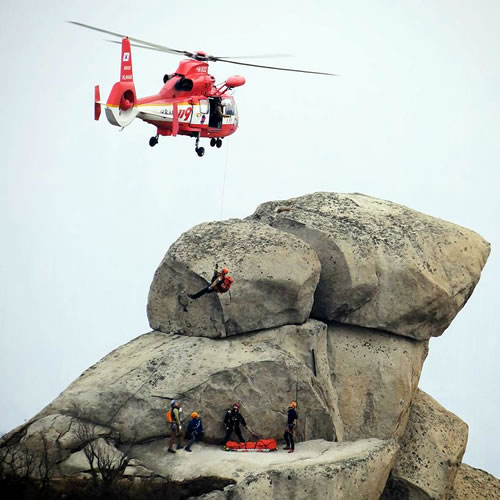 Is the human mind wired so that we care ultimately only about our own pleasure and pain, and consider the welfare of others only in so far as it affects our own welfare? Is natural selection always a process in which selfish traits increase in frequency in a population and altruistic traits decline? The main seminar in this FIG, Philosophy 104: “Altruism and Selfishness” will grapple with questions of altruism and selfishness as they are explored in evolutionary biology, psychology, and philosophy. The scientific questions are fascinating in their own right, and they also raise a host of interesting philosophical considerations. The other classes in this FIG will add to our investigation of these topics. Sociology 170: “Population Problems” — This class explores social, economic, and political problems affected by birth and death rates, population size and distribution, voluntary and forced migration. Topics include: world ecology, limits to growth, economic development, international conflict, environmental quality, metropolitan expansion, segregation by age, race, and wealth. Policies affecting reproduction, nuptiality, morbidity, mortality, and migrationare covered. Anthropology 105: “Principles of Biological Anthropology” — Examines the genetic basis of morphological, physiological and behavioral variations within and between human populations, and their origins and evolution. |
2021fall02 | ||
 This FIG offers the beginning art student three of the six foundation classes which are required for the Bachelor of Science in Art, Bachelor of Fine Arts, and Bachelor of Science in Art Education degree programs. (Note: The other three classes will be offered in a Spring FIG.) The Art Department has been offering this FIG for the many years. Art majors are very enthusiastic about this program. They enjoy the sense of community and have reaped the benefits of beginning their undergraduate careers as a team, helping each other develop their technical drawing and design skills, while simultaneously being introduced to contemporary and historical practices in art. Art 108: “Foundations of Contemporary Art” provides the historical context for the richly diverse state of contemporary art practice, and is the springboard for new art students to launch their own unique, artistic visions. In Art 102: “Two-Dimensional Design” and Art 212: “Drawing Methods and Concepts,” you will be led through a series of projects that develop and hone their visual vocabulary through exercises in composition, line, value, texture, and color manipulations. They will be asked to challenge themselves to consistently build upon existing skills and ideas, and to strive for excellence in the successful combination of idea and form in all their work. Two other versions of this FIG, Option 2 and Option 3, include the same classes on different days and times. You are strongly encouraged to sign up for Art 508: “Colloquium in Art.” This one-credit class will introduce you to nationally and internationally recognized art professionals. Students enrolling in an Art FIG will be asked to provide their own laptops outfitted with Adobe Creative Cloud. Recommended systems are:
or
Memory upgrades and a three-year Apple Computer warranty strongly suggested. |
2021fall03 | ||
 This FIG offers the beginning art student three of the six foundation classes which are required for the Bachelor of Science in Art, Bachelor of Fine Arts, and Bachelor of Science in Art Education degree programs. (Note: The other three classes will be offered in a Spring FIG.) The Art Department has been offering this FIG for the many years. Art majors are very enthusiastic about this program. They enjoy the sense of community and have reaped the benefits of beginning their undergraduate careers as a team, helping each other develop their technical drawing and design skills, while simultaneously being introduced to contemporary and historical practices in art. Art 108: “Foundations of Contemporary Art” provides the historical context for the richly diverse state of contemporary art practice, and is the springboard for new art students to launch their own unique, artistic visions. In Art 102: “Two-Dimensional Design” and Art 212: “Drawing Methods and Concepts,” you will be led through a series of projects that develop and hone their visual vocabulary through exercises in composition, line, value, texture, and color manipulations. They will be asked to challenge themselves to consistently build upon existing skills and ideas, and to strive for excellence in the successful combination of idea and form in all their work. Two other versions of this FIG, Option 1 and Option 3, include the same classes on different days and times. You are strongly encouraged to sign up for Art 508: “Colloquium in Art.” This one-credit class will introduce you to nationally and internationally recognized art professionals. Students enrolling in an Art FIG will be asked to provide their own laptops outfitted with Adobe Creative Cloud. Recommended systems are:
or
Memory upgrades and a three-year Apple Computer warranty strongly suggested. |
2021fall04 | ||
 This FIG offers the beginning art student three of the six foundation classes which are required for the Bachelor of Science in Art, Bachelor of Fine Arts, and Bachelor of Science in Art Education degree programs. (Note: The other three classes will be offered in a Spring FIG.) The Art Department has been offering this FIG for the many years. Art majors are very enthusiastic about this program. They enjoy the sense of community and have reaped the benefits of beginning their undergraduate careers as a team, helping each other develop their technical drawing and design skills, while simultaneously being introduced to contemporary and historical practices in art. Art 108: “Foundations of Contemporary Art” provides the historical context for the richly diverse state of contemporary art practice, and is the springboard for new art students to launch their own unique, artistic visions. In Art 102: “Two-Dimensional Design” and Art 212: “Drawing Methods and Concepts,” you will be led through a series of projects that develop and hone their visual vocabulary through exercises in composition, line, value, texture, and color manipulations. They will be asked to challenge themselves to consistently build upon existing skills and ideas, and to strive for excellence in the successful combination of idea and form in all their work. Two other versions of this FIG, Option 1 and Option 2, include the same classes on different days and times. You are strongly encouraged to sign up for Art 508: “Colloquium in Art.” This one-credit class will introduce you to nationally and internationally recognized art professionals. Students enrolling in an Art FIG will be asked to provide their own laptops outfitted with Adobe Creative Cloud. Recommended systems are:
or
Memory upgrades and a three-year Apple Computer warranty strongly suggested. |
2021fall05 | ||
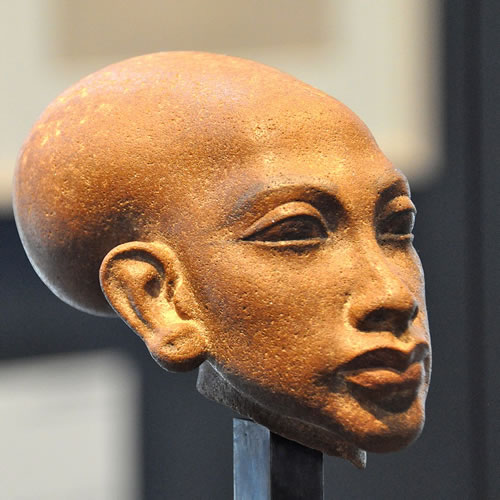 In this FIG, you will explore three different academic disciplines that examine the roles of humans in the wider world. In Anthropology 120: “Art and Archaeology,” we will focus on the ways archaeologists study the past through analyses of ancient technologies associated with the creation of decorative art and ornaments through time. We will look at the role of the environment and the role of gender in the development of different technologies and distinctive art forms and ornament styles. We will follow the development of artistic expression in flaked stone tools and ritual objects, in pottery, sculpture, beads and seals, textiles, basketry and graphic art. We will use different perspectives including anthropological, art historical, scientific and ideological angles. You will have hands-on experiences with ancient artifacts and modern replicas. You will learn about these technologies through actual replication of specific types of objects, supplemented by readings, discussions, lectures, films, and library research. By the end of the course, you will have a basic understanding of major phases in human cultural and technological development and how archaeology helps us understand our rich and diverse world. We will also draw on insights from the linked classes to deepen our understanding of the relationship between humans and the environment. Geography 139: “Global Environmental Issues” — This class explores the global and local nature of environmental problems facing humanity, including climate change, food and energy scarcity, deforestation, biodiversity loss, environmental justice, and population growth. Through group and individual work, you will learn to analyze and address environmental problems on many scales. A key theme will be that what appear to be monolithic global environmental problems are actually many smaller, context-specific and place-dependent problems that, when addressed with interdisciplinary and geographic perspectives, can be understood and addressed at the scale of our lived lives. Gender & Women’s Studies 102: “Gender, Women, and Society in Global Perspective” — You will have the opportunity to think critically about the power relations that affect the lives of diverse women in the United States — diverse in race, class, ability, sexuality, and other markers of power — and will be asked to contemplate the positions of diverse women from around the world. The class focuses on gender and race as key social attributes which shape people’s lives around the world. |
2021fall06 | ||
 History 200: “The Atomic Bomb in American and Japanese History” — When the U.S. dropped two atomic bombs on Japan in August 1945, the world entered the nuclear age. This affected every country on the planet, but the atom bomb holds special meaning for Japan and the United States. The main seminar in this FIG will explorethe history of this special relationship with the bomb, and through the bomb with each other. The course is divided into three parts, each dealing with a separate dimension of the atomic bomb. Part One examines the decision to drop the bomb, both the realtime context that led up to August 6 and 9, 1945; and the debate over the ethics and necessity of this decision that broke out in the immediate aftermath and continues to the present day. Part Two looks at the atomic bomb in culture and memory, comparing the construction of meaning around the bomb in the United States and Japan.Part Three focuses on the larger legacies of the bomb for international politics and security, touching on issues such as nuclear proliferation, the peace movement, nuclear terror, nuclear diplomacy and other aspects of our “atomic age”. The other courses in the FIG will add to our understanding of these issues. Philosophy 101: “Introduction to Philosophy” — In this course, you will gain a sense of what philosophy is, what it is good for, and how it is done. We will proceed by considering answers to philosophical questions like the following: Do I have free will? Does God exist? What is knowledge and what can be known? What kinds of actions are morally right and morallywrong? Is there even an objective morality? Is my life meaningful? Is it better to exist or not to exist? We will be reading a mixture of historical and contemporary sources with a focus on formulating and evaluating arguments. Political Science 140: “Introduction to International Relations” — Covers the major issues in international relations since the end of World War II including: the causes of war; civil wars and ethnic conflict; economic development; international trade; exchange rates and international monetary relations; international capital flows and financial crises; foreign direct investment; globalization and the environment; the UN, the IMF, World Bank, WTO, and other international organizations; and international law and human rights.The focus is on states' relations with each other and the factors determining the nature and outcomes of these international interactions. The course seeks to develop analytical tools for thinking about important questions in world politics regardless of the countries or issues involved, to examine international affairs in a systematic way. |
2021fall07 | ||
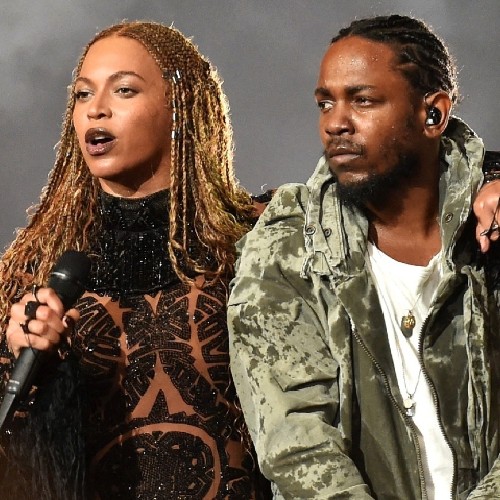 The main seminar in this FIG, English 177: “Audiotopia: Reading Race and Music,” will provide an introduction to global black literature and music that focuses on the international links between the U.S. and the Caribbean. From Beyoncé and Jamaica Kincaid to Kanye West and Paule Marshall, wewill analyze novels, poetry, music videos, films, and documentaries alongside different musical traditions. The seminar will highlight key historical moments like the Harlem Renaissance as well as more recent events, like rapper Kendrick Lamar's historic Pulitzer Prize win. We will consider questions such as: • How can literature and music capture the lived experience of marginalized people? • How do authors explore the social and political impact of black music? • How can we understand the relationship between fans and musical artists? Ultimately, this FIG will enable students to think critically about narratives that present black American culture as a monolith and instead recognize the diversity of African diasporic experience. The broader context provided by the linked courses will add to our exploration of these topics. Sociology 134: “Sociology of Race and Ethnicity in the United States” — This course explores the nature of inter-group relations with an emphasis on various forms of racism, discrimination, and white privilege; historical backgroundand characteristics of American Indians, African Americans, Hispanic Americans, Asian Americans and other racial and ethnic minorities; a consideration of economic, housing, political, legal, educational, familial, and health challenges faced by minority groups in US society. Afro-American Studies 231: “Introduction to Afro-American History” — This course presents a social history of West Africans and African Americans from the trans-Atlantic slave trade through the modern civil rights movement. The following topics will receive special attention: the institution of slavery (1619-1865), emancipation and reconstruction (1861-1877), and the long civil rights movement (1877-1968). This course has three major themes. First, the varied experiences of slavery and the roles Black people played in maintaining and sustaining the North American mainland colonies while resisting their bondage. Second, how African Americans helped to create the new nation, became free people and fought for liberty. Third, the challenges, successes and shortcomings of emancipation, reconstruction, and the long civil rights movement. |
2021fall08 | ||
 This FIG introduces you to one of our most-used sensory systems by examining both how the human eye is put together and how it works. The main class of this FIG, Interdisciplinary Letters & Science 101: “Biology of Vision,” will make use of the vision science laboratory. In this class, you will see how multi-disciplinary the study of vision is as they explore how psychology, physics, biology, and clinical practice are brought together:
Psychology 202: “Introduction to Psychology” — Visual sensitivity like scene perception, human color vision, complex visual information of object recognition, contrast, depth, motion are all aspects of psychophysics. Blindness is an important aspect of neuropsychology. This class will help demonstrate how physiological events of visual perception are an important aspect of the psychological bases of human behavior. Chemistry 103: “General Chemistry I” — Introduction to stoichiometry and the mole concept; the behavior of gases, liquids, and solids; thermochemistry; electronic structure of atoms and chemical bonding; descriptive chemistry of selected elements and compounds; and intermolecular forces. |
2021fall09 | ||
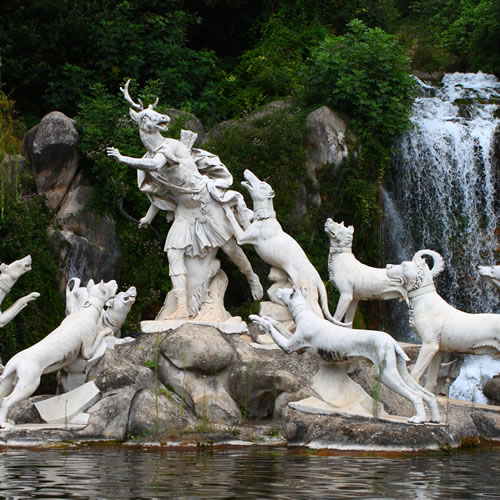 At its core, history is a collection of ancient stories with themes that often appear over and over again. It’s no wonder, then, that ancient myths find their way into modern lives every day. So, a central question explored by this FIG is: How do myths find their ways into our lives—into our poetry, our literature, our popular culture? To answer this question, we will dive into studies of classical literature as well as contemporary artistic and literary adaptations to examine the continuing presence of myth in society today. We will investigate puzzles: How do the lost fragments of an ancient Greek poem travel from archeologists, to translators, to us, speaking across time of love and desire? And these questions lead to other explorations:
The main seminar in this FIG, English 155: “Classical Myth and Modern Literature,” explores ways that modern American culture interprets, adopts, and adapts classical myth in order to address contemporary social, aesthetic, and political concerns. Each class in the FIG deals primarily with the classical worlds of Greece and Rome, but by tracing these adaptations and the transmission of stories from one culture, time, and place to another, you will also study other ancient civilizations from the Middle East, Africa, and Native America. The historical, archaeological, and literary approaches to the legacy of the classical world will take you out of the classroom, to the museum, the library, the laboratory, and the green spaces across campus—each with its own story to tell. Integrated Liberal Studies 203: “Western Culture: Literature and the Arts I” — This class examines Western art and literature from the earliest human civilizations of Mesopotamia and Egypt to the late medieval period, with substantial emphasis on classical antiquity and a view toward revealing how art and literature of western culture shape today’s modern culture. You will gain foundational knowledge of the Western intellectual tradition, and this includes acquiring critical skills for viewing art and reading literature. Emphasis is placed on developing critical thinking and discussion skills. Latin 103: “Elementary Latin” — The “dead” language, Latin, will never become more alive as it will when you are able to see all of its influence in the texts we study and also in other classes you pursue throughout your college career. Learning Latin is an opportunity and skill of a lifetime. This may be the only time you will be able to learn mythology while studying the language. Carpe diem! Travel through time and discover why our world is shaped the way it is today as you listen to what stories from other times and places have to tell us about who we are today—and do some storytelling of your own! |
2021fall10 | ||
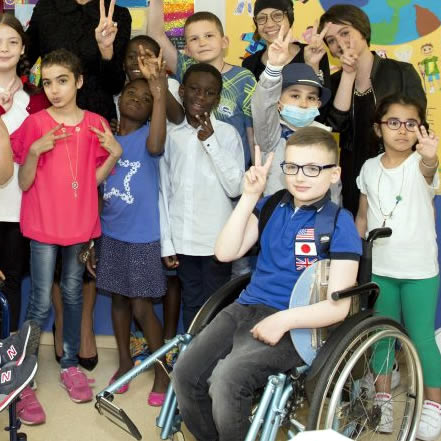 This FIG will provide experiences, knowledge, and skills to be an advocate and leader for educational equity and excellence in the field of special education. This FIG will examine the connections between dis/ability, race/ethnicity, and culture, in education and society in the United States and supports and services that promote meaningful inclusion in community and educational settings. Rehabilitation Psychology & Special Education 300: “Individuals with Disabilities” — This class is designed to introduce you to the history, etiology, and characteristics of specific categories of disability. It incorporates hands on learning as you develop your own service-learning projects directly related to working with persons with disabilities. Sociology 134: “Sociology of Race and Ethnicity in the United States” — This class examines social structures that shape and are shaped by race, ethnicity, racism, and racial/ethnic inequalities. You will learn to understand race and ethnicity as social constructs, and learn how race and ethnicity exist within social structures and institutions. |
2021fall11 | ||
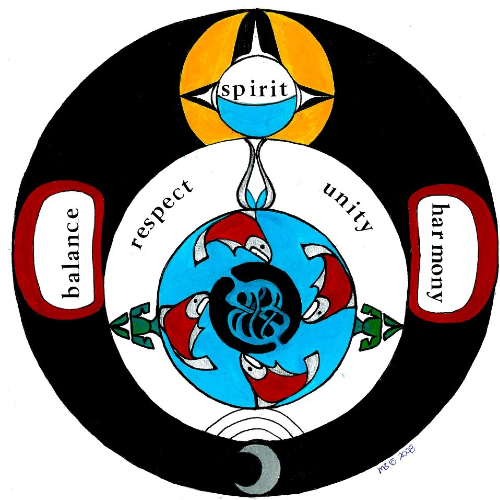 In this main FIG seminar, Inter L&S 106: “Earth Partnership: Indigenous Arts & Sciences,” we will explore the intersection of indigenous knowledge and Western science as we experience the culture and ecology of place. We will seek to foster an appreciation for the fundamental importance of diverse cultural perspectives and knowledge systems, as we examine our relationship with the environment. Throughout this experiential course, we will incorporate respect and reciprocity for the land and our community through the process of ecological restoration and stewardship. The other courses in this FIG will deepen our understanding of these issues. Environmental Studies 112: “Environmental Studies: The Social Perspective” — This course explores different social science approaches to interpreting the relationship between environment and society at various scales, from the local to the global. It traces the social origins of environmental concerns, their social impacts, and the different responses they engender. American Indian Studies 100: “Introduction to American Indian Studies” — This course focuses on the history, social organization, political experience, and artistic expression of North American Indians, using methods and materials from a number of disciplines as an introduction to the interdisciplinary field. We acknowledge the Ho-Chunk Nation on whose lands the UW campus resides. We deeply respect the knowledge embedded in the Ho-Chunk’s custodianship of Teejop (DeJope) and recognize their continuing connection to land, water, and community here at UW. |
2021fall12 | ||
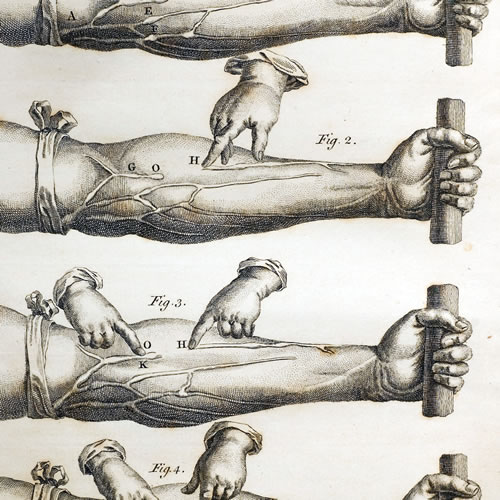 Thinking about majoring in a bioscience field? Explore exciting bioscience topics and opportunities at UW–Madison in this FIG. In Integrated Science 100: “Exploring Biology” you will:
In Fall 2021, the course will be organized around four primary topics that relate to biology in Wisconsin, with each topic led by a different instructor. We will explore science affecting residents in Wisconsin, look at Wisconsin biological systems as examples of concepts, and learn about how research being done on campus is contributing to discoveries in biology. This course brings four Exploring Biology FIGs together into one combined course. You will be grouped with other students in your FIG and paired with an instructor and peer leader that you will work closely with throughout the semester as you engage in interactive and collaborative activities. This class will be taught in a blended format, with students engaging in-person during class and completing activities online. This format will give students the opportunity to form meaningful connections with classmates, to learn at their own pace and time, to engage in a variety of types of activities, and to develop skills to be successful in online and in-person courses. Quotes from Integrated Science 100 students:
English 100: “Introduction to College Composition” — This class focuses on the development of rhetorical reading, listening, research, and writing abilities that will be crucial to success in this FIG. The class will also provide practice in written and spoken communication and information literacy that will be a foundation for university course work and post-college careers. Mathematics 112: “Algebra” — Polynomial equations, remainder and factor theorems, functions, graphs of functions, simultaneous linear equations, logarithm and exponential functions, sequences and series, mathematical induction, binomial theorem. |
2021fall13 | ||
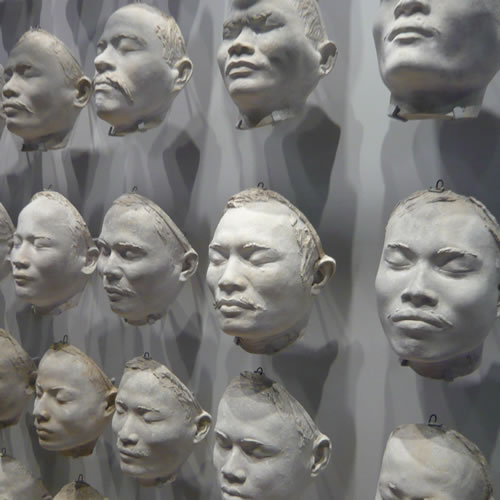 Thinking about majoring in a bioscience field? Explore exciting bioscience topics and opportunities at UW–Madison in this FIG. In Integrated Science 100: “Exploring Biology” you will:
In Fall 2021, the course will be organized around four primary topics that relate to biology in Wisconsin, with each topic led by a different instructor. We will explore science affecting residents in Wisconsin, look at Wisconsin biological systems as examples of concepts, and learn about how research being done on campus is contributing to discoveries in biology. This course brings four Exploring Biology FIGs together into one combined course. You will be grouped with other students in your FIG and paired with an instructor and peer leader that you will work closely with throughout the semester as you engage in interactive and collaborative activities. This class will be taught in a blended format, with students engaging in-person during class and completing activities online. This format will give students the opportunity to form meaningful connections with classmates, to learn at their own pace and time, to engage in a variety of types of activities, and to develop skills to be successful in online and in-person courses. Quotes from Integrated Science 100 students:
Anthropology 105: “Principles of Biological Anthropology” — Genetic basis of morphological, physiological and behavioral variations within and between human populations, and their origins and evolution. Chemistry 103: “General Chemistry I” — Stoichiometry and the mole concept, the behavior of gases, liquids and solids, thermochemistry, electronic structure of atoms and chemical bonding, descriptive chemistry of selected elements and compounds, intermolecular forces. |
2021fall14 | ||
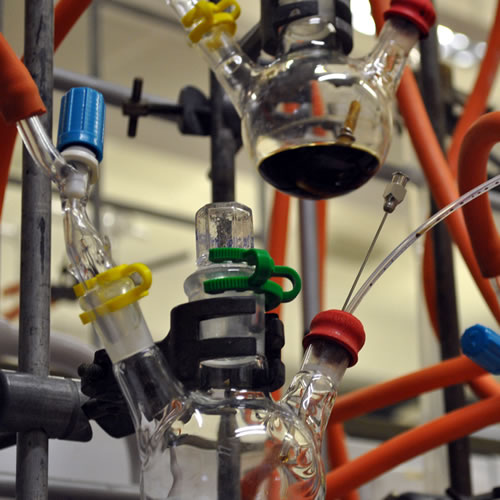 Thinking about majoring in a bioscience field? Explore exciting bioscience topics and opportunities at UW–Madison in this FIG. In Integrated Science 100: “Exploring Biology” you will:
In Fall 2021, the course will be organized around four primary topics that relate to biology in Wisconsin, with each topic led by a different instructor. We will explore science affecting residents in Wisconsin, look at Wisconsin biological systems as examples of concepts, and learn about how research being done on campus is contributing to discoveries in biology. This course brings four Exploring Biology FIGs together into one combined course. You will be grouped with other students in your FIG and paired with an instructor and peer leader that you will work closely with throughout the semester as you engage in interactive and collaborative activities. This class will be taught in a blended format, with students engaging in-person during class and completing activities online. This format will give students the opportunity to form meaningful connections with classmates, to learn at their own pace and time, to engage in a variety of types of activities, and to develop skills to be successful in online and in-person courses. Quotes from Integrated Science 100 students:
Interdisciplinary Courses (SoHE) 201: “Belonging, Purpose, and the Ecology of Human Happiness: EcoYou” — This class explores the art and science of purposeful living by integrating academic knowledge with issues real and relevant to students’ lives including: identity and belonging; happiness, purpose and meaning; self-awareness and self-presentation; romantic, peer and family relationships; material culture, consumer behavior and financial well-being; and connections to community, culture, and society. From the microbes that inhabit our guts to political revolutions sparked by a tweet, human lives are embedded in an ecology of complex, interdependent systems. Using the lens of human ecology, you will address “big questions” like: How am I connected to others and to larger systems? What brings happiness and works for the “greater good” in human lives? An overarching goal of the class is to help you understand yourself as embedded in the web of ever-evolving interconnected networks, an “EcoYou.” Human ecology is a systems approach to studying and understanding relationships between humans and their everyday environments; it is a civic and socially conscious orientation that is committed to understanding and improving the quality of human lives. Human ecology is inherently interdisciplinary drawing on research, theories and methods from diverse fields such as sociology, psychology, anthropology, economics, public health, biology, and art and design. Chemistry 103: “General Chemistry I” — Stoichiometry and the mole concept, the behavior of gases, liquids and solids, thermochemistry, electronic structure of atoms and chemical bonding, descriptive chemistry of selected elements and compounds, intermolecular forces. |
2021fall15 | ||
 Thinking about majoring in a bioscience field? Explore exciting bioscience topics and opportunities at UW–Madison in this FIG. In Integrated Science 100: “Exploring Biology” you will:
In Fall 2021, the course will be organized around four primary topics that relate to biology in Wisconsin, with each topic led by a different instructor. We will explore science affecting residents in Wisconsin, look at Wisconsin biological systems as examples of concepts, and learn about how research being done on campus is contributing to discoveries in biology. This course brings four Exploring Biology FIGs together into one combined course. You will be grouped with other students in your FIG and paired with an instructor and peer leader that you will work closely with throughout the semester as you engage in interactive and collaborative activities. This class will be taught in a blended format, with students engaging in-person during class and completing activities online. This format will give students the opportunity to form meaningful connections with classmates, to learn at their own pace and time, to engage in a variety of types of activities, and to develop skills to be successful in online and in-person courses. Quotes from Integrated Science 100 students:
Gender and Women’s Studies 103: “Women and Their Bodies in Health and Disease” — Information on physiological processes and phenomena relating to health (for example, menstruation, pregnancy) and ill health (for example, cancer, maternal mortality, depression). Attention to how bodies are located in social contexts that influence health and illness. Explorations of how multiple kinds of social inequalities shape health and health disparities. Information on roles that female-assigned and women-identified people play as health-care consumers, activists, and practitioners. Chemistry 103: “General Chemistry I” — Stoichiometry and the mole concept, the behavior of gases, liquids and solids, thermochemistry, electronic structure of atoms and chemical bonding, descriptive chemistry of selected elements and compounds, intermolecular forces. |
2021fall16 | ||
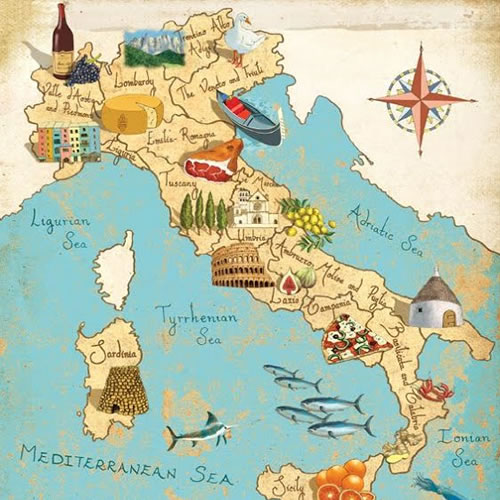 Are you curious about Italian food? If so, this FIG will allow you to explore the great variety of food cultures of Italy, the connection between local foods and local identities, and the representation of food in Italian literature from the nineteenth century to the present. You will discover novels with recipes, and cookbooks that read like a collection of stories. You will learn about the great migration at the end of the nineteenth century from Italy to North America, the export of Italian cuisine to America and the world, and the importance of food to ethnic identity. You will find out how the American supermarket model was used in Italy. You will also learn about contemporary food movements born in Italy such as Slow Food and other interesting sustainable food programs in Italy. You will discover:
The main seminar in this FIG, Literature in Translation 410: “Food Cultures of Italy,” is not a traditional lecture class. It requires active participation. You will shop for Italian food, learn how to read labels, and discover what is real Italian food and what is fake Italian-sounding food. You will collaborate with other students on group projects. You will explore the local food history of the Greenbush (the Italian-American community in Madison) and the region. You will compare American food traditions and habits to those of Italy. You will also do hands-on food demonstrations and tastings for a real taste-of-Italy experience. The two linked classes will provide useful connections and tools. Horticulture 120: “Survey of Horticulture” — Learn about the history and philosophy of gardening, explore our Mediterranean garden, and make the connection between plant cultivation and their culinary uses. Italian 101: “First Semester Italian” — Get closer to Italian culture, including food, while learning one of the great languages of the world. Buon appetito! |
2021fall17 | ||
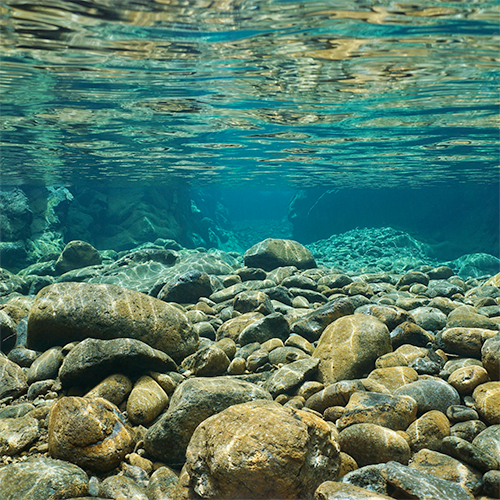 Zoology 400: “Freshwater: Past, Present, and Future” — Freshwater is our most precious resource. It is the basis for life itself, and the foundation for human societies. In the main seminar in this FIG, Zoology 400, we will explore contemporary societal issues relating to water and water resources, ranging from local to global concerns. Many themes of this course are rooted in biology, but we will also integrate insights from a range of other disciplines as we seek to gain a deeper understanding of the role of water in shaping life, landscape, and society. The other courses in the FIG will deepen our understanding of these issues. Geography 120: “Introduction To The Earth System” — Introduces students to how the Earth system works and what makes Earth livable. Through this course you will gain a deeper appreciation for how the atmosphere, oceans, life, and earth's surface interact to shape our local, regional and global landscapes. Many students take this course to fulfill their physical science requirement. Others use it as a gateway to majors and careers in Geography, Environmental Studies, and Environmental Science. Zoology 101: “Animal Biology” — General biological principles. Topics include: evolution, ecology, animal behavior, cell structure and function, genetics and molecular genetics and the physiology of a variety of organ systems emphasizing function in humans. |
2021fall18 | ||
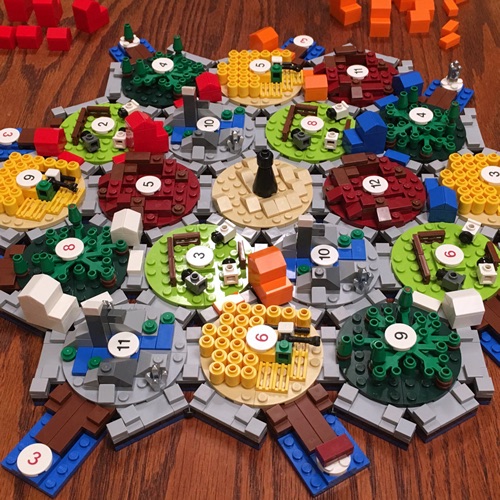 In this main FIG seminar, Curriculum & Instruction 357: “Game Design I,” you will develop fundamental skills in designing interactive systems through the design, construction, and analysis of playable game prototypes. Collaboratively and individually, you will create a variety of projects including: board games, card games, social and performative games, and interactive fiction/nonfiction. This class is aimed at students who are interested in games as an art form and does not require any prior coding or game design experience. The other classes in this FIG will inform our understanding of design, communication, and representation. Sociology 134: “Sociology of Race and Ethnicity in the United States” — The nature of intergroup relations; emphasis on various forms of racism, discrimination, and white privilege; historical background and characteristics of American Indians, African Americans, Hispanic Americans, Asian Americans and other racial and ethnic minorities; a consideration of economic, housing, political, legal, educational, familial, and health challenges faced by minority groups in U.S. society. Communication Arts 200: “Introduction to Digital Communication” — An introduction to digital communication and how it shapes our everyday lives. You will develop digital communication skills, explore digital media tools and trends, and examine expressions of power online. |
2021fall19 | ||
 You will first explore global biodiversity: what it is and why it is both important and in peril. We will then focus on the role of taxonomy in biodiversity. Finally, we will turn our attention to insects—by far the most diverse group of multi-cellular organisms on Earth, accounting for more than 58% of all known global biological diversity and some 70% of all animal diversity. Yet most insects go unnoticed by the average human and the few that receive our attention usually do so by negative attributes of their biology or association with us. This is a shame, since many fundamental advances in medical and biological sciences from molecular biology to genetics, from biodiversity to behavior, and from phylogenetic systematics to global climate change have been based on entomological research. Insects are central to agricultural production both as competitors and essential pollinators, and they play a significant role in human health as well as insights into forensic sciences. With background information developed in the linked classes, the main seminar in this FIG, Entomology 375: “Biodiversity and the Sixth Mass Extinction,” will begin to frame a more realistic picture of insect diversity. You will explore what the immense richness of species means not only to the human species but to the very health of the planet. We will enjoy field trips, a “virtual museum” experience, and other hands-on and experiential learning opportunities to bring the FIG concepts and your class together for an eye-opening journey. Entomology 201: “Insects and Human Culture” — Importance of insects in the human environment, emphasizing beneficial insects, disease carriers, and agricultural pests that interfere with our food supply. Environmental problems due to insect control agents will also be discussed. Chemistry 103: “General Chemistry I” — Introduction to stoichiometry and the mole concept; the behavior of gases, liquids, and solids; thermochemistry; electronic structure of atoms and chemical bonding; descriptive chemistry of selected elements and compounds; and intermolecular forces. |
2021fall21 | ||
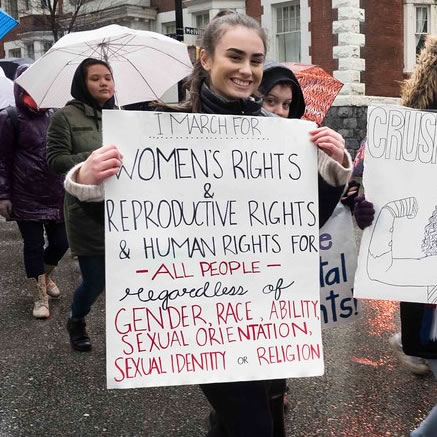 What is reproductive politics? Why is “reproduction” political to begin with? What is the difference between reproductive rights and reproductive justice, and why is this distinction important? How do reproductive technologies, like IUDs and birth control pills, become tools of personal freedom in some contexts and tools of coercion in other contexts? In this FIG, we will explore reproductive politics from a global perspective. Drawing on case studies from around the world, we will explore how fertility, reproduction, and child-bearing have held different and changing meanings across cultures and times, and the various contexts in which reproduction has been subject to political struggle. We will explore how the history of reproductive technologies—from birth control pills to breast pumps to midwifery to IVF and egg-freezing technologies—has been shaped by global historical processes, including the dynamics of gender, class, race, and geopolitics. While cultivating a truly global understanding of the history of reproduction, this FIG will also give students a chance to place their own lives, and our own society, within this global history, developing both “empathy” and “cultural competency,” in line with the core objectives of the Wisconsin Experience. The other two classes in this FIG will bring a public health perspective to our exploration while also helping you understand reproductive politics within a global frame that includes consideration of demographic trends, global inequality,and environmental change. Gender & Women’s Studies 103: “Gender, Women, Bodies, and Health” — Examines both physiological and social processes relating to gender and health across the lifespan among cisgender, transgender, and nonbinary individuals. Examples of topics include hormonal processes, reproductive anatomy and physiology, sexuality, sexual pleasure, chronic illness, depression, and sexual violence. A primary objective is for you to connect information about your bodies and personal health to larger social and political contexts. In particular, the course considers how health and health disparities are shaped by multiple kind of social inequalities, particularly inequalities based on gender. Sociology 170: “Population Problems” — Social, economic, and political problems affected by birth and death rates, population size and distribution, voluntary and forced migration. World ecology, limits to growth, economic development, international conflict, environmental quality, metropolitan expansion, segregation by age, race, and wealth. Policies affecting reproduction, nuptiality, morbidity, mortality, migration. |
2021fall22 | ||
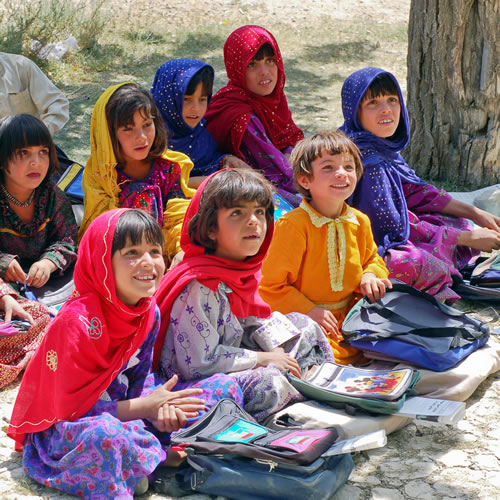 This FIG is about globalization, world regions, and education. You will study globalization from educational, international studies, and anthropological perspectives. The primary goal is to connect international studies (with a focus on global economic, political, cultural, and social patterns); anthropological understandings of mobility, cultures, and communities; and an understanding of the role of education in society. You will develop:
In the main FIG seminar, Curriculum & Instruction 292: “Globalizing Education,” you will consider the impact of globalization on schooling; the relationship of schooling to increasingly global societies; and how policy, curriculum, and instruction can be responsive to globalization. International Studies 101: “Introduction to International Studies” — This course familiarizes students with the field of international studies, and provides an interdisciplinary examination of the cultural, political, economic, and social patterns that have defined the modern world. Anthropology 104: “Cultural Anthropology and Human Diversity” — This introduction to cultural anthropology for non-majors looks at societies around the world and within the United States to understand how societies are organized, including economics, politics, language, religion, ecology, gender, and kinship. |
2021fall23 | ||
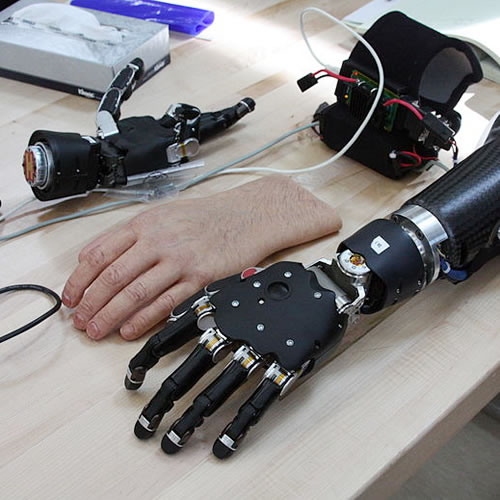 This FIG is for first-year students in the College of Engineering. The main class in the FIG, Interdisciplinary Courses (Engineering) 170: “Design Practicum,” will introduce you to design via the invention, fabrication and testing of a device that solves a problem proposed by a real world client. Lectures will address information retrieval techniques, specification writing, methods for enhancing creativity, analysis techniques, scheduling, selection methodologies, cost estimating, sustainability in design, shop safety, engineering ethics, opportunities for engineering students (i.e., study abroad, internships, co-ops), major exploration, fabrication equipment and techniques, and oral and written communication. In this FIG section, we will apply engineering and design toward solving healthcare-related problems while also incorporating insights from the linked Religious Studies class. Chemistry 103: “General Chemistry I” — Introduction to stoichiometry and the mole concept; the behavior of gases, liquids, and solids; thermochemistry; electronic structure of atoms and chemical bonding; descriptive chemistry of selected elements and compounds; and intermolecular forces. Religious Studies 102: “Exploring Religion in Sickness and Health” — An introduction to the study of religion through the lens of health and health through the lens of religion employing approaches from the humanities and social sciences in conversation with health-related disciplines. It asks questions such as: How do religious peoples understand and live in sickness and health? How do people connect physical well-being to spiritual well-being? Medicine to meaning-making? How does looking at religion in sickness and health provide insight into its roles in a variety of cultures and contexts, globally and locally? How do health and religion connect particularly in situations of social marginalization and immigration? How does religion impact understandings of health and sickness beyond the borders of specific religious communities? |
2021fall24 | ||
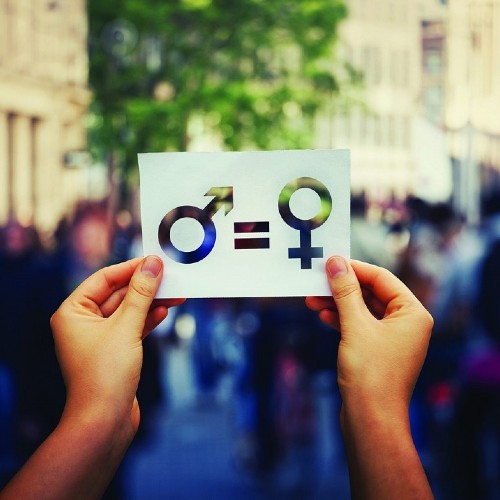 The main class in this FIG, Spanish 224: “Introduction to Hispanic Literatures,” will focus on the treatment and representation of gender in Hispanic literary texts. While speaking Spanish, we will examine the way that male and female roles, as well as machismo and marianismo, have been portrayed in a variety of literary genres, such as poetry (from epic to modern feminist poems), short stories, novels, plays, and in cinema. Iconic figures such as the seducer Don Juan, an imaginary Don Quijote’s ideal female Dulcinea, as well as sexually provocative and ambiguous characters from Pedro Almodovar’s films will be discussed. We will study, compare, and contrast both Spanish and Latin American literary traditions populated by mermaids, amazons, and other “magical” females such as One Hundred Years of Solitude’s Remedios, the beauty who ascended heavenward clutching two bed sheets. Gender & Women’s Studies 102: “Gender, Women, and Society in Global Perspective” — You will have the opportunity to think critically about the power relations that affect the lives of diverse women in the United States — diverse in race, class, ability, sexuality, and other markers of power — and will be asked to contemplate the positions of diverse women from around the world. The class focuses on gender and race as key social attributes which shape people’s lives around the world. Based on your language placement score, you will also enroll in Spanish 226: “Intermediate Language Practice with Emphasis on Writing and Grammar” or Spanish 311: “Advanced Language Practice.” |
2021fall25 | ||
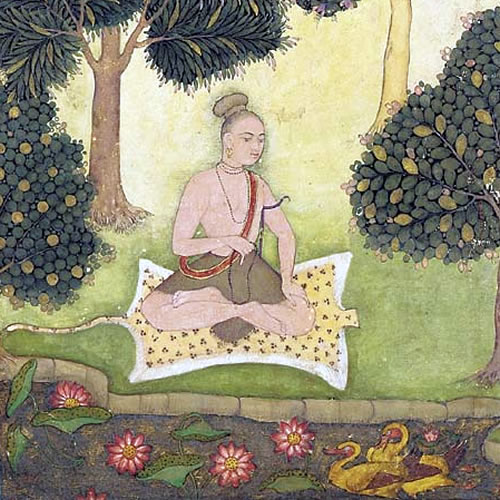 The word yoga is now commonly associated with postures and physical exercise. Originally it referred to diverse ascetic and meditative practices aiming at release from the cycle of rebirth. The main class in this FIG, Languages & Cultures of Asia 300: “Yoga: Ancient Philosophy and Modern Practice,” traces the history and development of yoga practices in the Hindu traditions of India from early to modern times. We will also examine the adaptation of these practices in the West and survey styles of practice from Hot Yoga to Aerial Yoga. The class will include workshops on academic writing, co-taught with instructors from the UW Writing Center, and hands-on instructional sessions in Memorial Library focusing on the effective use of library resources, including academic databases, and research strategies. Thus the class will provide skills that will be useful for future coursework at UW–Madison. Anthropology 104: “Cultural Anthropology and Human Diversity” — A comparative cross-cultural consideration of social organization, economics, politics, language, religion, ecology, gender, and cultural change. Asian 100: “Passion And Enlightenment” — The course offers a comparative and interdisciplinary introduction to multiple cultures of Asia. It focuses on the link between passion and enlightenment in Asian literature, film, and belief. |
2021fall26 | ||
 The main course in this First-Year Interest Group will provide an introduction to the cultural and literary history of African American women from the period of enslavement to the present. Students will critically engage with the experiences and intellectual cultures of black women writers, artists, scholars, and activists in order to explore how they address and represent interlocking constructions of race, gender, socioeconomic status, sexuality and citizenship. We will read slave narratives, novels, poems, plays, manifestos, essays, and engage with a wide variety of cultural materials including film, visual art, music videos, and social media. This FIG will appeal to students interested in social justice, in community-based arts programs, in history, in literature, and in questions that derive from disciplines like political science, sociology, and economics. Our aim is to create a welcoming space where students will learn about the historical and ongoing contributions of African Americans to the United States while developing an understanding of critical race theory grounded across multiple traditions of disciplinary thought. At the heart of this endeavor is the belief that black lives and black expressive cultures provide us with critical instruments for approaching traditional histories and narratives of power. The other courses in this FIG will add to our engagement with literary cultures by deepening our understanding of the shifting sociological and historical contexts that anchor black social life at any given moment and will additionally offer strategies for thinking about how to practically apply and engage with our community to further antiracism. Sociology 134: “Sociology of Race and Ethnicity in the United States” — The nature of inter-group relations; emphasis on various forms of racism, discrimination, and white privilege; historical background and characteristics of American Indians, African Americans, Hispanic Americans, Asian Americans and other racial and ethnic minorities; a consideration of economic, housing, political, legal, educational, familial, and health challenges faced by minority groups in U.S. society. Gender & Women’s Studies 102: “Gender, Women, and Society in Global Perspective” — You will have the opportunity to think critically about the power relations that affect the lives of diverse women in the United States — diverse in race, class, ability, sexuality, and other markers of power — and will be asked to contemplate the positions of diverse women from around the world. The class focuses on gender and race as key social attributes which shape people’s lives around the world. |
2021fall27 | ||
 The global pandemic of COVID-19, racial injustice, an unpredictable economy, societal inequities, and political and ideological divides have led to increases in stress and to a range of anxieties that make human flourishing challenging, to say the least. We’re living in difficult times! This FIG will explore these issues with a special focus on whether and how distinct populations in the US flourish (socially, politically, economically, etc.) during times like this. We will use content from the larger Art and Science of Human Flourishing course Psychology 120: “Human Flourishing in Contentious Times” including additional resources and activities to explore and analyze some of the central themes. A major focus of the FIG will be on the dynamics of flourishing among historically marginalized and racialized populations in American society. Students from these communities are particularly encouraged to enroll in this FIG. The other courses in the FIG will deepen our understanding and analysis of these issues. Sociology 134: “Sociology of Race and Ethnicity in the United States” — This course explores the nature of inter-group relations with an emphasis on various forms of racism, discrimination, and white privilege; historical background and characteristics of American Indians, African Americans, Hispanic Americans, Asian Americans and other racial and ethnic minorities; a consideration of economic, housing, political, legal, educational, familial, and health challenges faced by minority groups in US society. English 100: “Introduction to College Composition” — This course helps students prepare for the demands of writing at UW-Madison and also helps them think about writing beyond the classroom. The course satisfies the Communication A general education requirement for undergraduates. |
2021fall28 | ||
 “Human Memory, Big Data, and The Digital Age” is a FIG about memory. We will consider the relative frailty of human memory in comparison to the unforgetting nature of digital storage. Humans forget; computers do not. The main seminar in this FIG will begin by considering the relationship between memory and human identity. In many ways, we are who we are because we remember who we are day to day. However, human memory is fragile. We forget things; we misremember events. By contrast, any and all online activity leaves a trace that can be collected to form a version of the user. This version is not identical to the human user and yet is often a frighteningly accurate image of the user whose behaviors may be tracked and predicted. Importantly, this digital version of the user is produced by a form of memory (or more precisely a storage of information) that does not forget. You may not remember “liking” that photo on Facebook at 3 am, but Facebook does. The course will draw its reading and viewing list from a variety of literary and non-literary sources. Our central text will be Frankenstein (1818) and current debates around NSA surveillance, social media literacy, online persona, and online privacy. Our primary project will be to develop a digital portfolio of work in collaboration with DesignLab. The other two courses in this FIG will help develop a greater understanding of the place of memory in human experience and a critical perspective on our place in 21st-century digital culture. This FIG is well suited for students interested in a certificate in Digital Studies and majors in English, Computer Sciences, Communication Arts, Journalism, Legal Studies, and Philosophy. Philosophy 101: “Introduction to Philosophy” — The purpose of this class is to give you a better sense of what philosophy is, how it relates to other disciplines, and what it is good for. We will proceed by considering possible answers to a number of key philosophical questions such as: Do we have free will? What is knowledge and what sorts of things can we know? What is the fundamental nature of reality? Does God exist? Is truth relative or objective? Is life absurd and meaningless? What, if anything, determines that an action (for instance, intentionally killing an innocent person) is morally wrong? As will soon become clear, much of philosophy consists in formulating and evaluating arguments. Computer Sciences 200: “Programming I” — This class will provide you with an introduction to programming from a data-science perspective. No previous programming experience is required. |
2021fall29 | ||
 Crimes are on TV and in the paper every day. There are shows and reports on big and small crimes, and big and small criminals. Crimes and the justice system fascinate us on many, sometimes contradictory levels. We watch Dexter, The Good Wife, or Breaking Bad with enthusiasm while at the same time we and the criminal justice system condemn and convict serial killers and drugs lords. This is the same justice system that incarcerates thousands (!) of people that are (later) proven innocent. Are we “Making a Murderer,” to quote the title of the much-debated Netflix documentary? We also often wonder how well the justice system “understands” the individual because law has its own complex way of seeing the world and us and defining our responsibilities. In this FIG we will explore law, crime and justice in a multi-dimensional way. We will study the criminal justice system as a legal system, look at how it functions, and what particular roles its actors have. The FIG seminar, English 174: “Law and Literature,” will not only complement what we study in “Criminal Justice in America,” the course offers a unique perspective on law and how it is represented in literature or fiction in general. It might sound counterintuitive, but literature can describe and make understandable certain issues in the legal system much more clearly than a law journal article or the legal discourse in general. Literature provides the other perspective, considers the human condition, and shows how it feels to be subjected to the law. At the same time, literature as a discipline provides tools that help us understand the workings of the law better. How does storytelling in court work? What makes for a convincing story, what roles does rhetoric in a court decision play, why do lawyers often use every day words in such an odd way, and how do lawyers create meaning? We will look at these questions very closely in the FIG seminar. The goal of this FIG is to help students understand that legal and literary studies are connected, and that ideas of law and justice have a foundation in the humanities. This course emphasizes the importance of writing and precise wording, so students can work on and improve their textual-analytical skills. We will discuss our course topics together in an open and inclusive manner. Students will learn to “think” (a little bit) like lawyers, but we will also explore law’s limitations and the benefits of a broader approach to both law and literature. Legal Studies 131: “Criminal Justice in America” — We will study the criminal justice system as a legal system, look at its elements, how it functions, and what particular roles its actors have. The class follows how a typical case moves through the system, beginning at the stage where police want to make an arrest or search a residence to the moment when an individual reenters society after a prison sentence. Along the way we will look at common myths (people are deterred by harsh sentences, the death penalty saves lives, innocent people don’t confess, etc.) and debunk them. Sociology 170: “Population Problems” — This sociology class draws on materials and perspectives from the related fields of demography (the statistical study of populations) and epidemiology (the study of the distribution and determinants of health and disease states in populations). You will examine how certain social phenomena—particularly structural inequality—influence and are reproduced by population change both globally and in the contemporary United States. The class will focus on issues that feature in current social science and public policy debates, including population aging, fertility and reproduction, immigration, and social inequalities, with a special attention to disparities by race, ethnicity, and socioeconomic status. |
2021fall30 | ||
 The main seminar in this FIG, Library and Information Studies 301: “Information Literacies in Online Spaces,” explores the information and digital literacies needed by today’s online consumers and producers. Issues to be covered include access (digital divides, power relations in online communities, regulation), analysis (assessing credibility, evaluating risks, analyzing representation), and production (editing Wikipedia and creating a video game). This class engages you in key debates and research related to digital literacies, connects with concepts covered in the other FIG courses, and develops information literacies. The three classes that comprise this FIG will prepare you with reading, writing, and analytical skills that will be useful across the humanities and social sciences. Many students from past “Internet and Society” FIGs have chosen majors in journalism, communication arts, economics, and computer sciences. All three courses on this FIG count toward the UW’s Digital Studies Certificate. For this achievement, students complete 16 credits that include one core course, four topical courses, and a one-credit capstone experience. The courses in this FIG will satisfy three of the topical course requirements. Communication Arts 346: “Critical Internet Studies” — Traces the Internet’s history, reception, audience, industries, rhetorics, fictional and filmic narratives, and its potential as a purveyor and transmitter of culture and values. Library and Information Studies 202: “Information Divides & Differences in a Multicultural Society” — Explores the impact of and barriers to access to information on the lives of low-income ethnic/racial minority communities in the United States. Provides introduction to contemporary information society from a sociological perspective. |
2021fall31 | ||
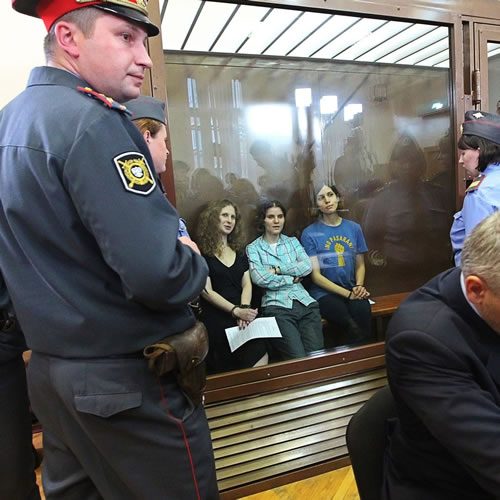 Russia is often labeled as lawless. Is it? That is the central question for this course. Russia has undergone multiple transitions since the mid-19th century—swerving back and forth from authoritarian rule to democracy many times. It is often assumed that law is unimportant under authoritarianism—that the will of dictators is all that matters. We will learn that law continued to matter under all of Russia’s authoritarian leaders, including Tsar Nicholas, Stalin, and Putin, but that the ability of citizens to use law to protect themselves varied. We will also explore the extent to which the role of law changed as efforts were made to bring democracy to Russia. Although these efforts were short-lived, they left a legacy in the law and in legal institutions. The main seminar will begin with a discussion of basic concepts, such as law, justice, rule of law, and judicial independence. Our understanding will come through a lively mix of short stories, novellas, and films that illuminate various aspects of law in Russia as well as more scholarly articles. Armed with these conceptual tools, we will study a series of themes that persist in the legal systems of the region from the mid-19th century through the present day. Among the topics we will explore:
The question of how law fits into the larger political landscape also will be explored in the first linked class, Political Science 120: “Politics around the World.” The second linked class will be Slavic 101: “First-Semester Russian,” which will provide you with an introduction to speaking, listening, reading, and writing Russian. Both linked classes will enhance our analysis of the main FIG topic while also preparing you more broadly for further studies in languages, area studies, political science and/or other law-related coursework. Political Science 120: “Politics around the World” — Offers a comparison of politics and government in selected countries from around the world. Slavic 101: “First-Semester Russian” — Focuses on speaking, listening, reading and writing Russian, with an introduction to Russian culture. No previous knowledge of Russian expected. |
2021fall32 | ||
 What if our best teacher is all around us, even under our feet? For Indigenous peoples, whose worldviews, languages, and lifeways emerge from, and sustain, reciprocal relations to place, land is always teaching. In the main FIG seminar, Educational Policy Studies 150: “Land Education,” we will reflect on “land as first teacher” by considering Indigenous approaches to learning, Indigenous languages in relation to land, and the current environmental health of land. We will seek to live the principles of Indigenous learning through Indigenous foodways and experiential, place-based learning activities, including:
Together, as we develop our personal relationship to Teejop (Four Lakes, or the Madison region), we will explore our generational responsibilities to the place we call home. What is land teaching us? And how do we learn to listen? Environmental Studies 126: “Principles of Environmental Science” — This class relates principles of environmental science to our daily activities, with an eye to sustainability, conservation, and systems thinking. It introduces science as a process of inquiry and discovery rather than just a pre-established set of facts. For example, in this course, we position ourselves with our feet on the UW–Madison campus and ask questions about the energy we use to heat and cool our buildings, the food we eat, the air we breathe, the electricity we use to power lights and appliances, the goods we purchase, and the waste we create. The class will give you the tools to see the world around you in new ways, to notice things you may have missed, and to encourage you to seek paths that both care for yourself and for all with whom you share this planet. Through lab investigations and field trips we’ll make the invisible visible. Using the campus as a microcosm, you will encounter global environmental problems and solutions at the scale of our campus, which can then translate to the wider world. American Indian Studies 250: “Indians of Wisconsin” —Introduces students to the various American Indian Nations within Wisconsin's borders with an emphasis on their history, culture, and sovereignty. Examines individual tribes and bands as well as common issues that affect tribal and non-tribal people in Wisconsin. |
2021fall33 | ||
 Philosophy 104: “Living with Artificial Intelligence” — The rise of artificial intelligence raises many deep philosophical questions. What does it mean to be human in a world where computers can do much of what we have traditionally thought to be unique to us? How ought we live with our machine peers and how can we make sure that their values align with ours? Do AIs deserve rights like us? The main seminar in this FIG will explore these issues and others as we ponder, “What is next with artificial intelligence and how will we deal with it?” The other courses in this FIG will deepen our understanding of these topics. Computer Science 200: “Programming I” — This course introduces the process of incrementally developing small (200-500 lines) programs along with fundamental Computer Science topics. These topics include: problem abstraction and decomposition, the edit-compile-run cycle, using variables of primitive and more complex data types, conditional and loop-based flow control, basic testing and debugging techniques, how to define and call functions (methods), and IO processing techniques. It also teaches and reinforces good programming practices including the use of a consistent style, and meaningful documentation. Intended for students who have no prior programming experience. Computer Science 300: “Programming II” — Introduction to Object-Oriented Programming using classes and objects to solve more complex problems. Introduces array-based and linked data structures: including lists, stacks, and queues. Programming assignments require writing and developing multi-class (file) programs using interfaces, generics, and exception handling to solve challenging real world problems. Topics reviewed include reading/writing data and objects from/to files and exception handling, and command line arguments. Topics introduced: object-oriented design; class vs. object; create and define interfaces and iterators; searching and sorting; abstract data types (List,Stack,Queue,PriorityQueue(Heap),Binary Search Tree); generic interfaces (parametric polymorphism); how to design and write test methods and classes; array based vs. linked node implementations; introduction to complexity analysis; recursion. Library Information Systems 201: “The Information Society” —This course examines important social, legal, and historical contexts of information and information technologies, and explores significant social, legal, and moral questions that surround those technologies. |
2021fall34 | ||
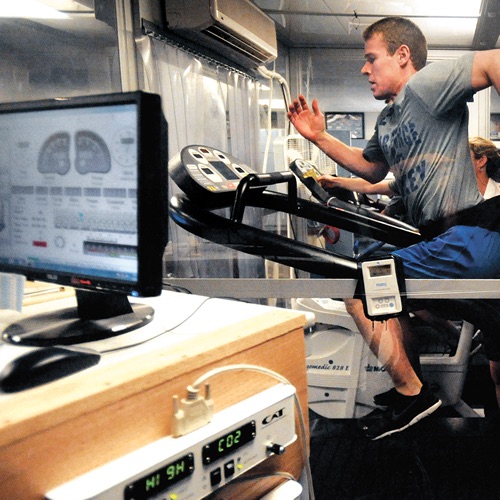 Are you interested in kinesiology? The central theme of this FIG is the definition and measurement of physical activity behavior. This is an important issue in the field of kinesiology because of the challenges involved with exercise prescription. Additionally, accurate and consistent measurements of physical activity behavior are needed to examine potential dose-response relationships between physical activity and health outcomes. The main FIG seminar, Kinesiology 112, will provide an opportunity for you to use numbers, equations, and kinesiology-related definitions to address the exercise measurement challenge. Throughout the semester, we will examine the definition of and recommendations for physical activity provided by the American College of Sports Medicine to various populations. As a result of this FIG, you will be able to:
Math 112: “Algebra” — This class introduces polynomial equations, remainder and factor theorems, functions, graphs of functions, simultaneous linear equations, logarithm and exponential functions, sequences and series, mathematical induction, binomial theorem. English 100: “Introduction to College Composition” — Focuses on development of rhetorical reading, listening, and writing abilities; provides practice in written and spoken communication (emphasis on writing); develops information literacy; provides a foundation for a variety of college course work and post-college careers. Kinesiology 300: “Practicum in Kinesiology” — Supervised experience in a specialized area of physical education. |
2021fall35 | ||
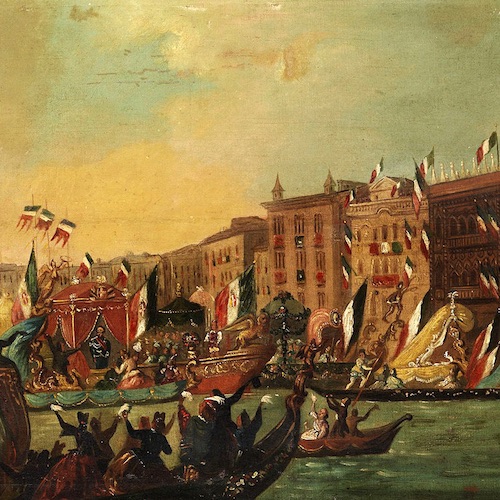 What is a national identity in the context of the fluid globalized world in which we live? How are identities affected by big migratory waves within the same country and, more importantly, from one country or continent to another? The Italian case is one of the many in the so-called Western world that can help us to monitor the possible answers to these questions. Through readings and discussions, we will follow the history of Italy from the Risorgimento (the revolutionary upheaval that led to the unification of the country in 1860) through the two World Wars, and Fascism up to the present time. One of the aims of the main FIG seminar is to analyze the rhetoric used in different periods to understand issues of national identity according to the following historical phases: struggle for the unification of Italy; colonial campaigns; Fascism; and migration from and to Italy in the twentieth and early twenty-first centuries. Through this study of the Italian case, you will become more knowledgeable and aware of the historical development of a European country that was central in the nineteenth century for its struggle to unify, and crucial to the history of the Western countries for the infamous Fascist regime. By studying the Italian case especially through the concerns raised by colonialist politics and migration issues, you will be able to relate not only to what happened and is happening in one major country in Europe, with possible references to the situations in France and Germany, but also to similar issues in the United States (the Italian migration to the United States is a good example). The goal is to help you develop and strengthen their knowledge of a different culture and history as it intersects with your own. Economics 101: “Principles of Microeconomics” — This course covers economic problems of individuals, firms and industries with emphasis on value, price, and distribution of income. Political Science 140: “Introduction to International Relations” — This class covers the major issues in international relations since the end of World War II including: the causes of war; civil wars and ethnic conflict; economic development; international trade; exchange rates and international monetary relations; international capital flows and financial crises; foreign direct investment; globalization and the environment; international organizations like the United Nations, the International Monetary Fund, the World Bank, and the World Trade Organization; and international law and human rights. The focus is on states’ relations with each other and the factors determining the nature and outcomes of these international interactions. The course seeks to develop analytical tools for thinking about important questions in world politics regardless of the countries or issues involved, to examine international affairs in a systematic way. |
2021fall36 | ||
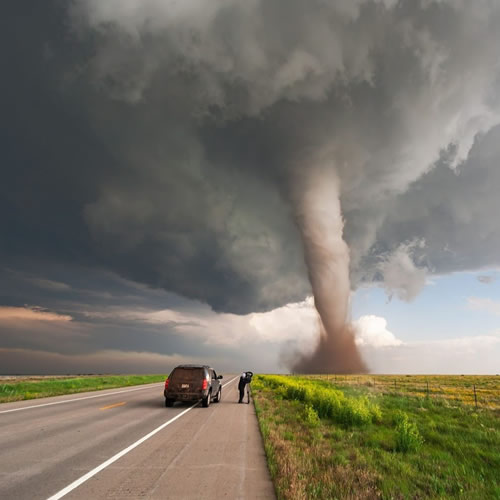 Natural hazards affect societal infrastructure, the economy, and people’s lives. The prediction of extreme events and the need to increase societal resilience to these events has become a national priority in the aftermath of such events as Hurricanes Katrina, Matthew, Sandy, Rita and Harvey; the April 2011 Tornado Super outbreak; volcanic eruptions such as Mount St. Helens in 1980, as well as seasonal events such as wildfires. There is a clear societal need to better understand and mitigate the risks posed to the United States by these hazards. The main seminar in this FIG, Atmospheric and Oceanic Sciences 141: “Natural Hazards of Weather,” will discuss issues involving current global weather hazards: including prediction, and disaster resilience, resistance, and risk reduction. We will learn that weather forecasters must be able to convey the forecast and the probabilistic nature of the prediction in an effective manner. This requires that the public must not only understand the forecast but in many cases must be made to respond. From this class, you will learn key issues affecting hazardous weather occurrence in a changing climate, hazardous weather prediction, the science behind the dissemination of warnings, and societal response to weather hazards. In addition, you will learn the breadth of subject areas that you should master to pursue careers in the wide range of opportunities these problems present. Environmental Studies 112: “Environmental Studies: The Social Perspective” — This class examines the importance of social factors in the generation and resolution of complex environmental problems with an interdisciplinary perspective. Comparison of specific communities in the more and less developed areas of the world. Geoscience 140: “Natural Hazards and Disasters” — An exploration of the science behind natural disasters including earthquakes, tsunamis, volcanic eruptions, landslides, tornadoes, hurricanes, and floods. Why, where, and when do these events occur, and why are some predictable but others are not? The class will also address hazard assessment, forecasting, and mitigation to lessen their impact on society. |
2021fall37 | ||
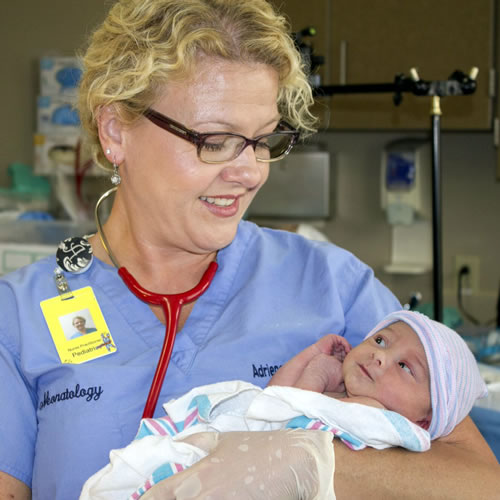 This FIG will take an interdisciplinary approach to examining current issues in health care and the delivery of care in various settings to diverse populations. Nursing 105: “Health Care Systems: An Interdisciplinary Approach” will focus on factors affecting health and the value placed on health, the delivery of health care in different settings, and the roles of various professionals in the healthcare system. Rehabilitation Psychology & Special Education 300: “Individuals with Disabilities” — This class is designed to introduce you to the history, etiology, and characteristics of specific categories of disability. It incorporates hands-on learning as you develop your own service-learning projects directly related to working with persons with disabilities. Educational Psychology 320: “Human Development in Infancy and Childhood” — Normative processes and individual differences in physical, mental, social and emotional development and behavior from infancy through late childhood. This FIG is designed for students considering an application to the Nursing Program in the School of Nursing; courses in this FIG have been carefully selected to fulfill requirements for the Nursing Program. Acceptance into the School of Nursing is dependent on a number of factors including completion of specific courses and meeting minimum grade-point average requirements. If you are interested in this academic path, please meet with an advisor from the School of Nursing to get full information. |
2021fall38 | ||
 This FIG will take an interdisciplinary approach to examining current issues in health care and the delivery of care in various settings to diverse populations. Nursing 105: “Health Care Systems: An Interdisciplinary Approach” will focus on factors affecting health and the value placed on health, the delivery of health care in different settings, and the roles of various professionals in the healthcare system. Sociology 134: “Sociology of Race and Ethnicity in the United States” — This class examines social structures that shape and are shaped by race, ethnicity, racism, and racial/ethnic inequalities. You will learn to understand race and ethnicity as social constructs, and learn how race and ethnicity exist within social structures and institutions. Gender and Women’s Studies 103: “Gender, Women, Bodies, and Health” — Information on physiological processes and phenomena relating to health (for example, menstruation, pregnancy) and ill health (for example, cancer, maternal mortality, depression). Attention to how bodies are located in social contexts that influence health and illness. Explorations of how multiple kinds of social inequalities shape health and health disparities. Information on roles that female-assigned and women-identified people play as health-care consumers, activists, and practitioners. This FIG is designed for students considering an application to the Nursing Program in the School of Nursing; courses in this FIG have been carefully selected to fulfill requirements for the Nursing Program. Acceptance into the School of Nursing is dependent on a number of factors including completion of specific courses and meeting minimum grade-point average requirements. If you are interested in this academic path, please meet with an advisor from the School of Nursing to get full information. |
2021fall39 | ||
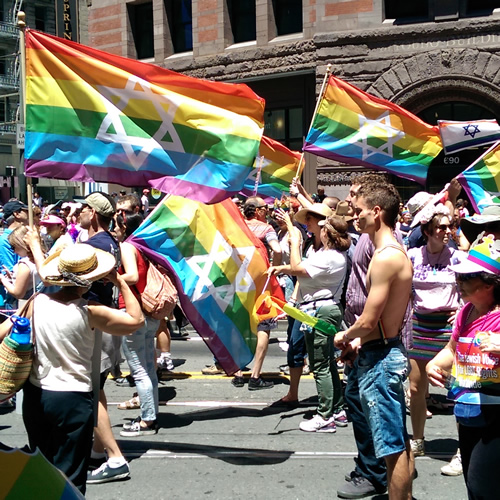 This FIG will take an interdisciplinary approach to examining current issues in health care and the delivery of care in various settings to diverse populations. Nursing 105: “Health Care Systems: An Interdisciplinary Approach” will focus on factors affecting health and the value placed on health, the delivery of health care in different settings, and the roles of various professionals in the healthcare system. Sociology 134: “Sociology of Race and Ethnicity in the United States” — This class examines social structures that shape and are shaped by race, ethnicity, racism, and racial/ethnic inequalities. You will learn to understand race and ethnicity as social constructs, and learn how race and ethnicity exist within social structures and institutions. Religious Studies 102: “Exploring Religion in Sickness and Health” — This is an excellent companion course for students interested in the health sciences. Questions covered in this course include: What is religion? Sickness? Health? How can we understand their relationships? How do religious peoples understand and live in sickness and health? How does physical well-being connect to spiritual well-being? How does medicine connect to meaning-making? How does looking at religion in sickness and health provide insight into its roles in different cultures and contexts? From Southeast Asia to the Caribbean, Africa, and the Mediterranean, we’ll approach these questions using perspectives from anthropology, history, sociology, legal studies, and the medical sciences, among others. And we’ll come home to Wisconsin and the United States to examine these questions as well. This FIG is designed for students considering an application to the Nursing Program in the School of Nursing; courses in this FIG have been carefully selected to fulfill requirements for the Nursing Program. Acceptance into the School of Nursing is dependent on a number of factors including completion of specific courses and meeting minimum grade-point average requirements. If you are interested in this academic path, please meet with an advisor from the School of Nursing to get full information. |
2021fall40 | ||
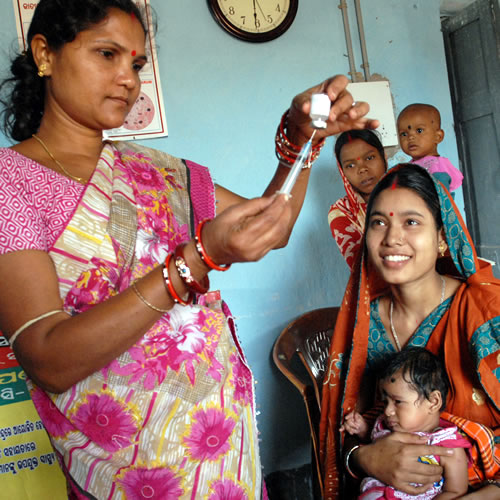 This FIG will take an interdisciplinary approach to examining current issues in health care and the delivery of care in various settings to diverse populations. Nursing 105: “Health Care Systems: An Interdisciplinary Approach” will focus on factors affecting health and the value placed on health, the delivery of health care in different settings, and the roles of various professionals in the healthcare system. Nutritional Sciences 203: “Introduction to Global Health” — Introduces you to global health concepts through multidisciplinary speakers dedicated to improving health through their unique training. It targets students with an interest in public health and those who wish to learn how their field impacts their global issues. Sociology 170: “Population Problems” — Social, economic, and political problems affected by birth and death rates, population size and distribution, voluntary and forced migration. World ecology, limits to growth, economic development, international conflict, environmental quality, metropolitan expansion, segregation by age, race, and wealth. Policies affecting reproduction, nuptiality, morbidity, mortality, migration. This FIG is designed for students considering an application to the Nursing Program in the School of Nursing; courses in this FIG have been carefully selected to fulfill requirements for the Nursing Program. Acceptance into the School of Nursing is dependent on a number of factors including completion of specific courses and meeting minimum grade-point average requirements. If you are interested in this academic path, please meet with an advisor from the School of Nursing to get full information. |
2021fall41 | ||
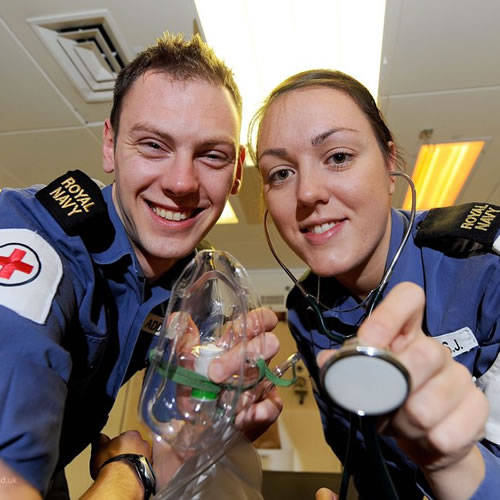 This FIG will take an interdisciplinary approach to examining current issues in health care and the delivery of care in various settings to diverse populations. Nursing 105: “Health Care Systems: An Interdisciplinary Approach” will focus on factors affecting health and the value placed on health, the delivery of health care in different settings, and the roles of various professionals in the healthcare system. English 100: “Introduction to College Composition” — This class treats writing as both an act of inquiry and communication, and it offers opportunities to identify, develop, and express concepts; engage in conversations with the ideas of others; and critique and construct arguments through original research. Sociology 134: “Sociology of Race and Ethnicity in the United States” — The nature of inter-group relations; emphasis on various forms of racism, discrimination, and white privilege; historical background and characteristics of American Indians, African Americans, Hispanic Americans, Asian Americans and other racial and ethnic minorities; a consideration of economic, housing, political, legal, educational, familial, and health challenges faced by minority groups in U.S. society. This FIG is designed for students considering an application to the Nursing Program in the School of Nursing; courses in this FIG have been carefully selected to fulfill requirements for the Nursing Program. Acceptance into the School of Nursing is dependent on a number of factors including completion of specific courses and meeting minimum grade-point average requirements. If you are interested in this academic path, please meet with an advisor from the School of Nursing to get full information. |
2021fall42 | ||
 This FIG connects the science of modern astronomy with the history of scientific thought. We will use practical, interactive, astronomical experiences to explore how and why our modern understanding of the universe as a whole, and our place within it—our “world view”—takes its modern form. Where will you find the moon tomorrow? How do you measure the size of the Earth with a cell phone? What does a stellar spectrum really look like in the telescope? The skies of both night and day will be important parts of our classroom, and each student will emerge from the experience with an enhanced awareness and feel for the celestial world. The planetarium and observatories on campus will be parts of our FIG. In addition to the regular class time, you will be required to participate in some out-of-class activities, both day and night, scheduled as weather permits. You will achieve a deep understanding and appreciation of the modern science that shapes our world today by exploring the evolution of historical worldviews, and the experiences, observations, and theories on which they are founded. In the main FIG seminar, Interdisciplinary Courses (L&S) 107: “How Astronomy Shapes our Worldview,” you will also use hands-on, interactive astronomical observations, laboratory demonstrations, and guided activities to complement and contextualize what you are learning in the two linked classes. Together, these classes will help us understand the role observation and scientific discovery play in shaping the way we see ourselves and our place in the cosmos. Astronomy 103: “The Evolving Universe: Stars, Galaxies, and Cosmology” — This class is designed to open a window for you to the cosmos, provoke your imagination, and address some fundamental and tantalizing questions: When did the Universe begin? Do black holes really exist? What makes stars shine? Do stars ever die? What is at the edge of the universe? Is there an edge? Why are the most distant objects in the universe so different from objects nearby? How do we know they are different? How do we know they are far away? An important fact is that astronomers have definitive answers to only some of these questions. However, the observable universe is a time machine—our only one—and in this class we will travel from the solar system to the event horizon, which is the edge of the observable universe. In so doing, we will venture back to the beginning of time. We will also try to understand our place in the universe, and how it is that we came to be made of star-matter, and why our galactic home is called the Milky Way. History of Science 201: “The Origins of Scientific Thought” — Emergence of scientific method and scientific modes of thought out of ancient philosophical and religious traditions; the impact of ancient science on medieval Christendom; the origins and development of the Copernican-Newtonian world view. |
2021fall43 | ||
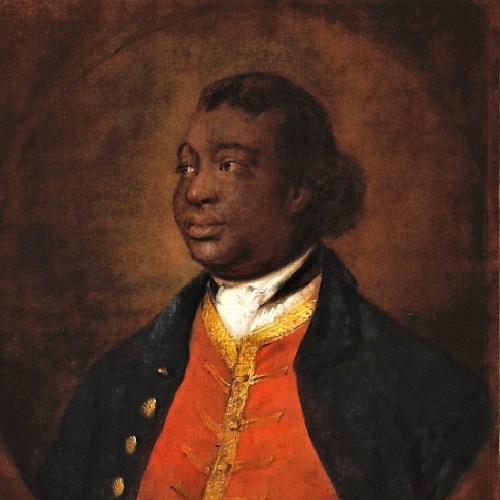 This FIG is designed for students interested in history, race relations and art, and in understanding how we got to this contemporary moment in our social and political development. In the main seminar in this FIG, Art History 105: “The Representation of Race in Art and Visual Culture,” we will apply analytical tools from the discipline of art history to gain insights about racial and gender-based inequalities in the United States and in one of its main colonizers, Great Britain. Art History as a discipline fosters human connection; it lets us see how other cultures and time periods understood and represented their worlds in very different ways. This FIG will help students recognize and appreciate the aesthetic power (which is not the same thing as beauty) of the range of artistic styles and modes of representation in the art of this period in order to better understand the history of social inequality and racism in both countries. The other courses in the FIG will deepen our understanding of these issues. History 120: “Europe And The Modern World 1815 To The Present” — This course surveys a vast subject: the transformation of Europe, from the aftermaths of the French Revolution and Napoleonic Wars to today's European Union. Major themes include the expansion of capitalism; centralization of nation-states; rise of mass politics; recasting of gender and the family; proliferation of industrial warfare; and emergence of ideologies such as liberalism, conservatism, nationalism, socialism, communism, and fascism. Throughout, we will also explore how Europe was intertwined with the wider world through colonialism and decolonization. Anthropology 104: “Cultural Anthropology and Human Diversity” — Introduction to cultural anthropology for non-majors; comparative cross-cultural consideration of social organization, economics, politics, language, religion, ecology, gender, and cultural change. |
2021fall44 | ||
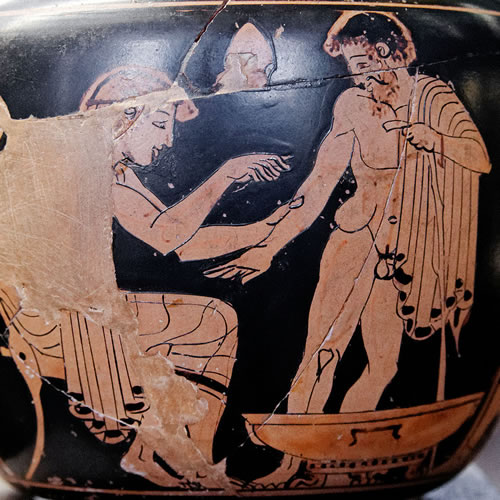 Can you imagine a world in which doctors knew nothing about blood circulation or microbes, in which magic and medicine were often combined, in which surgery was performed without anesthetics? Such was life in ancient Greece and Rome. And yet, many of the medical discoveries and practices of the Greeks and Romans were of fundamental importance in the development of Western medicine, and laid the foundation for some of the most basic tenets of modern medicine. The purpose of this class is to give an account of the various aspects of the healing profession in antiquity, focusing in particular on the ways in which it differed from or anticipated medical practices nowadays. The main seminar in this FIG, Classics 373: “Ancient Medicine,” will explore these issues while the other courses will deepen your understanding of the overall topic. Religious Studies 102: “Religion in Sickness and Health” — This is an excellent companion course for students interested in the health sciences. Questions covered in this course include: What is religion? Sickness? Health? How can we understand their relationships? How do religious peoples understand and live in sickness and health? How does physical well-being connect to spiritual well-being? How does medicine connect to meaning-making? How does looking at religion in sickness and health provide insight into its roles in different cultures and contexts? From Southeast Asia to the Caribbean, Africa, and the Mediterranean, we’ll approach these questions using perspectives from anthropology, history, sociology, legal studies, and the medical sciences, among others. And we’ll come home to Wisconsin and the United States to examine these questions as well. .Chemistry 103: “General Chemistry I” — Introduction to stoichiometry and the mole concept; the behavior of gases, liquids, and solids; thermochemistry; electronic structure of atoms and chemical bonding; descriptive chemistry of selected elements and compounds; and intermolecular forces. Chemistry 109: “Advanced General Chemistry” — A modern introduction to chemical principles that draws on current research themes. For students with good chemistry and mathematics background preparation who desire a one-semester coverage of general chemistry. Recommended for students intending majors in chemistry or allied fields. |
2021fall45 | ||
 Are you considering a possible career in pharmacy? Would you like to learn more about contemporary pharmacy practice and postgraduate opportunities? In Pharmacy 125: “Exploring Pharmacy I” we will consider:
Class time will include regular discussion and integration of the linked classes’ content as well as use of case studies, guest instructors, readings, videos, and reflective assignments. First-year pharmacy students will serve as FIG mentors in the class. The class will be reflective and interactive in nature to develop communication, critical/analytical thinking, and problem-solving skills. Students will work on assignments and projects both individually and in small groups and will present information to the larger class to enhance teamwork and communication skills. Chemistry 103: “General Chemistry I” — Introduction to stoichiometry and the mole concept; the behavior of gases, liquids, and solids; thermochemistry; electronic structure of atoms and chemical bonding; descriptive chemistry of selected elements and compounds; and intermolecular forces. Pharmacy Practice 305: “Consumer Self-Care and Over-the-Counter Drugs” — Provides you with information regarding self-care of common, minor health conditions. Emphasis on illness prevention, health condition symptoms, guidelines for over-the-counter product use, adverse effects and alcohol/drug interactions of over-the-counter products, and when to request professional care. |
2021fall46 | ||
 Are you considering a possible career in pharmacy? Would you like to learn more about contemporary pharmacy practice and postgraduate opportunities? In Pharmacy 125: “Exploring Pharmacy I” we will consider:
Class time will include regular discussion and integration of the linked classes’ content as well as use of case studies, guest instructors, readings, videos, and reflective assignments. First-year pharmacy students will serve as FIG mentors in the class. The class will be reflective and interactive in nature to develop communication, critical/analytical thinking, and problem-solving skills. Students will work on assignments and projects both individually and in small groups and will present information to the larger class to enhance teamwork and communication skills. Choose a chemistry class: Chemistry 103: “General Chemistry I” — Introduction to stoichiometry and the mole concept; the behavior of gases, liquids, and solids; thermochemistry; electronic structure of atoms and chemical bonding; descriptive chemistry of selected elements and compounds; and intermolecular forces. or Chemistry 109: “Advanced General Chemistry” — A modern introduction to chemical principles that draws on current research themes. For students with good chemistry and mathematics background preparation who desire a one-semester coverage of general chemistry. Recommended for students intending majors in chemistry or allied fields. Lecture, lab, and discussion. Pharmacy Practice 305: “Consumer Self-Care and Over-the-Counter Drugs” — Provides you with information regarding self-care of common, minor health conditions. Emphasis on illness prevention, health condition symptoms, guidelines for over-the-counter product use, adverse effects and alcohol/drug interactions of over-the-counter products, and when to request professional care. |
2021fall47 | ||
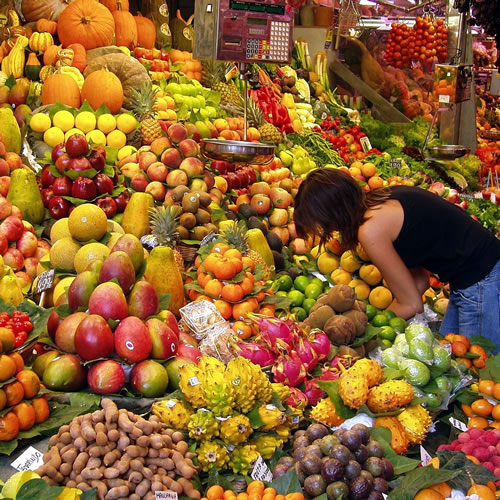 The main seminar in this FIG, Horticulture 350: “Plants and Human Well-being” (and its discussion section Horticulture 351), focuses on various aspects of well-being associated with plants, plant materials, landscapes, and plant products, including aesthetics, food, medicine, fiber, art, psychoactive substances, and stimulants. This class includes lectures, discussions, hands-on demonstrations, and short field trips and will allow students to build a sense of community while also helping integrate content from the other classes in the FIG. This topic will likely appeal to students interested in horticulture, biology and food systems, medicine and public health, human cultural diversity, and geography. Chemistry 103: “General Chemistry I” — Introduction to stoichiometry and the mole concept; the behavior of gases, liquids, and solids; thermochemistry; electronic structure of atoms and chemical bonding; descriptive chemistry of selected elements and compounds; and intermolecular forces. Anthropology 104: “Cultural Anthropology and Human Diversity” — A comparative cross-cultural consideration of social organization, economics, politics, language, religion, ecology, gender, and cultural change. |
2021fall48 | ||
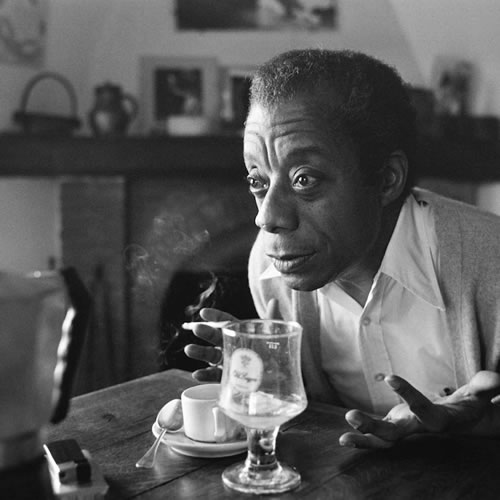 The main seminar in this FIG, English 174: “Protest Literature,” will consider protest literature in the United States from the 20th to the 21st centuries. We will read mostly from brand new anthologies published within the last three years so that we can hear what authors are saying in response to our particular historical moment. Through our readings and discussions we will seek to understand how writers respond(ed) to the social and political issues of their time. We will read mostly poetry and short stories while we explore the goals and literary strategies of the authors. We will read selections from anthologies such as Who Will Speak for America?, Go Home!; New Poets of Native Nations; Misrepresented People: Poetic Responses to Trump’s America; Women of Resistance; and Resistance, Rebellion, Life: 50 Poems for Now. The other classes in the FIG will add important historical context and disciplinary insights that will deepen our understanding of these issues. Afro-American Studies 231: “Introduction to Afro-American History” — Survey from the African beginnings to the present day. Focus on slave trade and slavery; major black figures of the past; social, economic, and political trends within the black community. Sociology 125: “American Society: How it Really Works” — Explanation of US performance in realizing the values of freedom, fairness, and democracy. Topics include markets, capitalism, democracy, capitalist democracy; class, race, and gender inequalities; militarism and US international role; and US electoral politics, media, and social mobilization. |
2021fall49 | ||
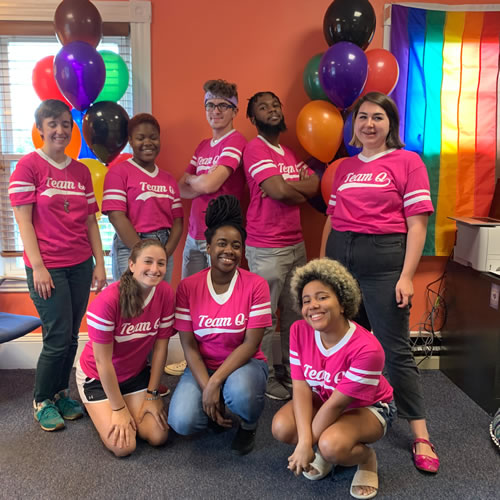 This FIG seminar focuses on LGBTQ+ Activism within and surrounding the long Civil Rights movement of African American activism through the 20th and into the 21st century. We will be reading first person narratives, engaging with the art, literature, and other documents of African American LGBTQ+ activism, in order to better understand the cultural and political work of the people who brought together queerness and 20th century efforts to address racism and promote social justice. How were the Civil Rights movement and the LGBTQ+ movements inextricably linked, even if sometimes held in tension? As we examine this history, we will gain insight into how people in the past told stories, worked, worshipped, taught, played, and made meaning, and how their collective lives shaped the world. Our sources emphasize biography, memoir, films, visual art, essays, and other forms of media. You also have the opportunity to work with archived primary documents and explore questions of your own. Together, we will build a unique comprehension of the queer 20th century and long Civil Rights movement based on your interests and findings. Gender and Women’s Studies 200: “Introduction to Lesbian, Gay, Bisexual, Transgender and Queer+ Studies” — A multidisciplinary introduction to lesbian, gay, bisexual, transgender, and queer+ (LGBTQ+) studies, including theories of identity formation, different societal interaction with LGBTQ+ communities, LGBTQ+ cultures in history, and contemporary legal and political issues. Course materials explore the intersections between LGBTQ+ identities and other socially marginalized identities, including (but not limited to) those based on race, ethnicity, religion and disability. Anthropology 104: “Cultural Anthropology and Human Diversity” — Introduction to cultural anthropology for non-majors; comparative cross-cultural consideration of social organization, economics, politics, language, religion, ecology, gender, and cultural change. Includes 25% coverage of U.S. ethnic and racial minorities. |
2021fall50 | ||
 Political Science 201: “Race and Politics in the United States,” — The main seminar in this FIG examines the sources and policy implications of the United States’ racial divide by analyzing a range of issues. We will examine the historical background of race relations and current policy debates, with a focus on trying to find common-ground solutions. We will examine issues such as affirmative action in the workplace and in higher education, differences in public opinion between white and black respondents, voting behavior, and the electoral politics of issues like multi-racial and ethnic tensions, immigration, criminal justice, education, and health care. The overall goal of this FIG is to stimulate critical thinking and to explore new ways of understanding of the intersection of race and politics. The other courses in this FIG will deepen our understanding of these issues. Sociology 134: ”Sociology of Race and Ethnicity in the United States,” — This course explores the nature of inter-group relations with an emphasis on various forms of racism, discrimination, and white privilege; historical background and characteristics of American Indians, African Americans, Hispanic Americans, Asian Americans and other racial and ethnic minorities; a consideration of economic, housing, political, legal, educational, familial, and health challenges faced by minority groups in US society. History 102: “American History Civil War to the Present,” — This course examines American political,economic and social development from the Civil War to the present. |
2021fall51 | ||
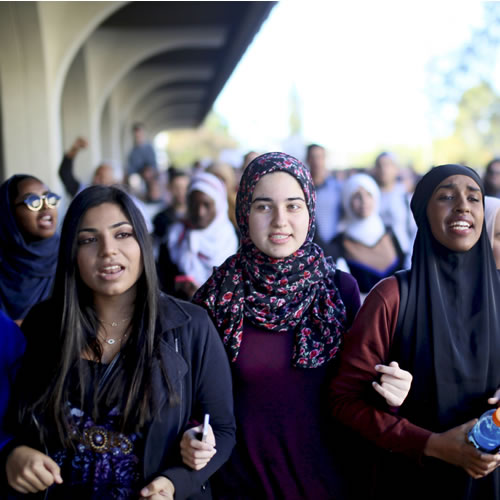 This FIG explores the complex relationship between race, ethnicity, and inequality in American public education. The core seminar, Educational Policy Studies 200: “Race, Ethnicity, and Inequality in American Education,” examines schools as sites where racial/ethnic inequality is produced, reproduced, and resisted through institutional structures and the everyday practices of teachers, students, parents, and community members. Although race and ethnicity will be the primary focus of the course, you will have opportunities to explore the ways race and ethnicity intersect with other identities (e.g., gender, social class, sexual orientation, etc.). A central focus will be on issues of policy and practice in K–12 education in the United States. As part of this course, you will have the opportunity to:
You will take other classes that complement our analysis and provide us with an opportunity to integrate learning across multiple domains. English 100: “Introduction to College Composition” — This class focuses on the development of rhetorical reading, listening, research, and writing abilities that will be crucial to success in this FIG. The class will also provide practice in written and spoken communication and information literacy that will be a foundation for university course work and post-college careers. Sociology 134: “Sociology of Race and Ethnicity in the United States” — This class provides a sociological approach to race and ethnicity in which we consider race and ethnicity as social constructs that permeate social life, are entrenched in social structures and institutions, and shift over time and space. We will examine the particular historical and contemporary ways in which race and ethnicity are made meaningful in the United States. |
2021fall52 | ||
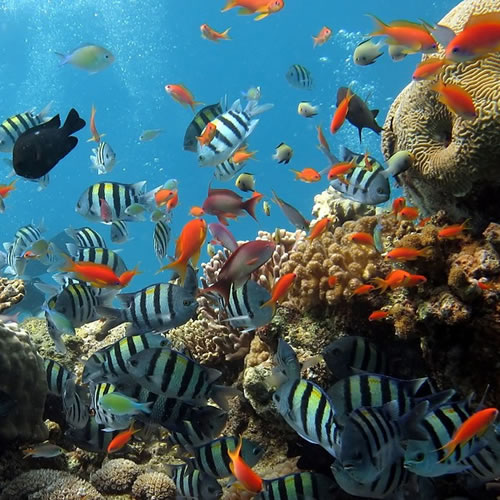 Tropical rainforests and coral reefs inspire awe in all of us, with their serene beauty and astounding biodiversity. They also happen to be two of the most important ecosystems on Earth, housing most of the world’s species and providing valuable ecosystem services for humanity. In Botany 265: “Rainforests and Coral Reefs,” you’ll explore these incredible natural communities and learn why they are important to human welfare. This course takes a “deep dive” into the foundations of both marine biology and terrestrial ecology and will answer questions like: · What makes rainforests and coral reefs the most biodiverse ecosystems on Earth?
· Why are coral reefs called the “rainforests of the sea”?
· How is human life dependent on these ecosystems?
· How are climate change and other human impacts affecting these ecosystems?
· What can we do to conserve rainforests and coral reefs into the future? One of the most exciting parts of this course is that you will develop your own research project and have a chance to carry it out during an optional winter-break field expedition to Belize in Central America! There, we will hike in lush rainforests and snorkel on the second-largest coral reef in the world, putting to direct use everything you learned during the fall semester. This class is taught in a blended format, and will give you resumé-building experience with instructional technology and multimedia, as well as real scientific research. The linked chemistry class in this FIG will help you understand the physical, chemical, and biological processes that make rainforests and coral reefs function. Spanish language will help you during our trip to Central America. Chemistry 103: “General Chemistry I” — Introduction to stoichiometry and the mole concept; the behavior of gases, liquids, and solids; thermochemistry; electronic structure of atoms and chemical bonding; descriptive chemistry of selected elements and compounds; and intermolecular forces. Choose one of the following: Spanish 203: “Third Semester Spanish” (14807) — Intermediate level language review, Hispanic readings, culture, and patterns of conversation. Spanish 204: “Fourth Semester Spanish” (16527) — Second-semester intermediate level language review, extensive readings in literature, intensive written and oral activities. Spanish 226: “Intermediate Language Practice with Emphasis on Writing and Grammar” (17528) — Intensive practice in reading, writing, and grammar. May be taken concurrently with Spanish 223 or 224. Spanish 311: “Advanced Language Practice” (14814) — Advanced language practice, including intensive writing and work in pertinent areas of grammar and stylistics, and Honors Optional. |
2021fall53 | ||
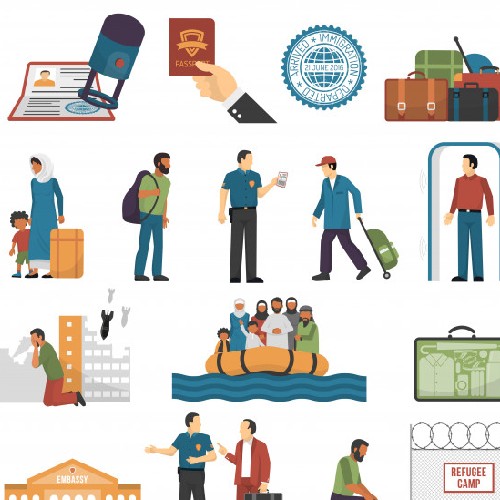 The main course in this FIG, Inter L&S 106: “Refugee Rights in a Bordered World,” will examine the clash between the human right to seek asylum and the sovereign rights of nation-states to regulate who enters their territory. We will examine the causes of migration, and the political and humanitarian responses to human displacement, along with movements to support the rights of refugees and migrant people. Throughout the course, we will deepen our understanding of current migration politics by situating these debates with both a global and historical context. The other courses in the FIG will add valuable perspectives to our exploration of these topics. International Studies 101: “Introduction to International Studies” — Familiarizes students with the field of international studies, and performs an interdisciplinary examination of the cultural, political, economic, and social patterns that have defined the modern world. Gender and Woman's Studies 102: “Gender, Women, and Society in Global Perspective” — Global, interdisciplinary, social science-oriented analysis of gender, race, class and sexuality in relationship to social institutions and movements for social change. Focus on gender and women in institutions such as education, the economy, the family, law, media, medicine, and politics. |
2021fall54 | ||
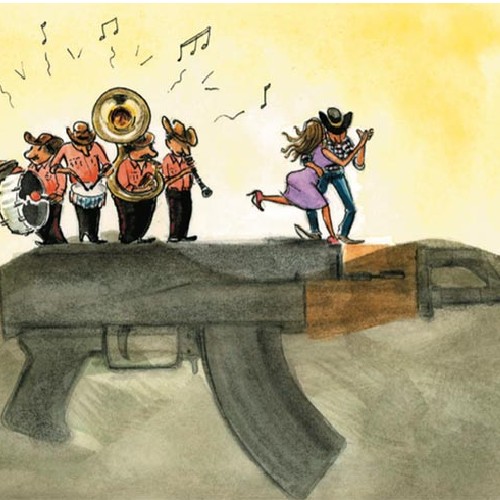 In this main FIG seminar, Integrated Liberal Studies 371: “Sex, Drugs and Literature in Latin America,” we will consider contemporary social problems in Latin America through the perspective of literature and cinema. In the first part of the course, we will explore the problem of gendered violence and human trafficking. In the second, we will study issues related to drug trafficking in Latin America and ponder on the so-called "narco-culture" of this region. Throughout the course, we will see emerging and vibrant cultural movements--some building on ethnic identity—that are reflected in a range of media and featuring new narrators who are providing a sense of hope in the region. The course begins with classic Latin American authors such as Gabriel García Márquez and ends with contemporary women writers. Our overall goal is to gain an appreciation of the cultural context necessary for us to understand a range of important contemporary social issues in the region. Sociology 134: “Sociology of Race and Ethnicity in the United States” — This course explores thenature of inter-group relationswith an emphasis on various forms of racism, discrimination, and white privilege; historical background and characteristics of American Indians, African Americans, Hispanic Americans, Asian Americans and other racial and ethnic minorities; a consideration of economic, housing, political, legal, educational, familial, and health challenges faced by minority groups in US society. Chicana/o and Latina/o Studies 201: “Introduction To Chicana/O And Latina/O Studies” — Introduction to the interdisciplinary study of Chicanas/os in the United States. Students will become acquainted with recent scholarly literature, paradigms, theories, and debates within Chicana/o studies pertaining to the historical, economic, cultural, and sociopolitical dimensions of the Chicana/o experience in the United States. |
2021fall55 | ||
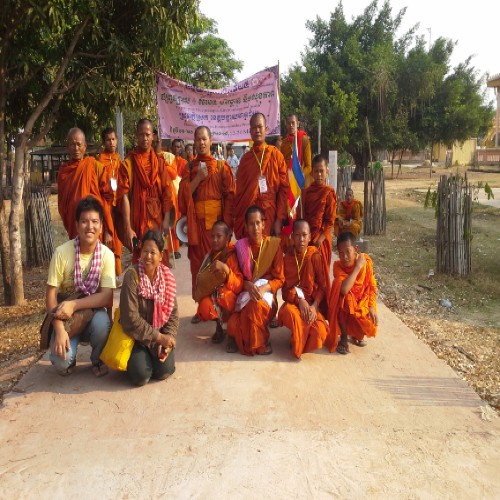 The main seminar in this FIG, History 200: “Social Justice Movements in Asia & Beyond,” will focus on historical and contemporary religious social justice movements in 20th century Asia. Many of these movements have had global reverberations both in terms of their methods and their aims. Among the topics we will explore are non-violent resistance, and movements related to social welfare, sustainability, gender equality, and prison reform. In addition to traditional academic approaches, we also will incorporate some experiential learning through meditation, and if possible, a day-long retreat on wholeness, well-being, and sustainability at a mindfulness center in the driftless region of Wisconsin that is modeled on a Buddhist monastery in southern Thailand. The other courses in the FIG will deepen our exploration of these topics. Asian 100: “Passion And Enlightenment” — The course offers a comparative and interdisciplinary introduction to multiple cultures of Asia. It focuses on the link between passion and enlightenment in Asian literature, film, and belief. Anthropology 104: “Cultural Anthropology and Human Diversity” — Introduction to cultural anthropology for non-majors; comparative cross-cultural consideration of social organization, economics, politics, language, religion, ecology, gender, and cultural change. |
2021fall56 | ||
 This FIG will explore the birth, growth, instantiation, and some of the consequences of the American consumer society. In our readings and discussions, we will grapple with questions such as: How did we come to be a consumer society: what were the critical actions, developments and historical circumstances that lead to this place? What does the consumer society look like going forward in a socially networked world? Now that virtually everything and everyone is a brand, how do we negotiate a space for citizenship? How do we make citizens better and more informed consumers? While the course covers the greatest part of modern U.S. marketing, roughly 1875 to present, I will frequently reference the current moment. This is done to make the class more accessible, relevant, and enjoyable. I have kept the readings to a reasonable level. The “required” readings (I hope you read them) average around 50 to 60 pages per class period. I suggest some other purely optional ones. I will show a film or two. I select readings for their style as well as their substance: these are well-written and stylistically accessible. Psychology 202: “Introduction to Psychology” — This class examines behavior, including its development, motivation, frustrations, emotion, intelligence, learning, forgetting, personality, language, thinking, and social behavior. Sociology 125: “American Society: How it Really Works” — This class provides an extended answer to the question “What kind of a society is the United States?” It also explores the implications of that answer for understanding and making progress on solving some of the problems that confront America today. Our analysis revolves around five key values that most Americans believe this society should realize: freedom, prosperity, efficiency, fairness, and Democracy. Our basic question is: To what degree does contemporary American society realize these values and how might it do a better job? A second but important question for us is: How do social scientists go about answering such questions? |
2021fall57 | ||
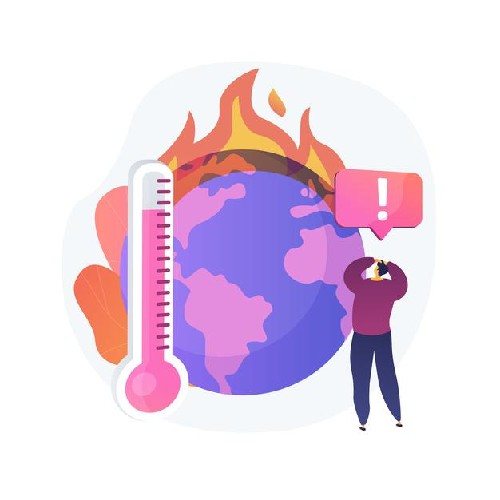 Communication Arts 368: “Theory and Practice of Persuasion” — Climate change poses a serious threat to many aspects of life as we know it. However, many people, organizations, and governments show little urgency in addressing the challengesalready wrought by our changing climate--let alone the more widespread impacts that scientific models predict are yet to come. Clearly, knowing the science is not enoughto spur action; factorslike social norms, compliance techniques, and social marketing will also play animportantrole. Students in this FIG will learnto apply persuasion science to the topic of climate change. To that end, we willtackle issues like: How to persuade people to change their attitudes and behavior? How persuasion can be used to address systemic change? How can you change norms around consumption? Does fear and doomism work with persuasion on climate change? Throughout, students will learnto ethically apply persuasion theories and compliance techniques as they create campaigns to take purposeful action to combat climate change. Participants will leave the course with improved confidence in their ability to apply social science research on persuasion to address this and other issues of concern. The other courses in this FIG will add to our understanding of these topics. Atmospheric & Oceanic Sciences 101: “Weather and Climate” — This course covers: nature and variability of wind, temperature, cloud and precipitation. Storm systems, fronts, thunderstorms, tornadoes and their prediction. Air composition and pollution. Global winds, seasonal changes, climate and climatic change. Sociology 170: “Population Problems” — This course covers: social, economic, and political problems affected by birth and death rates, population size and distribution, voluntary and forced migration. World ecology, limits to growth, economic development, international conflict, environmental quality, metropolitan expansion, segregation by age, race, and wealth. Policies affecting reproduction, nuptiality, morbidity, mortality, migration. |
2021fall58 | ||
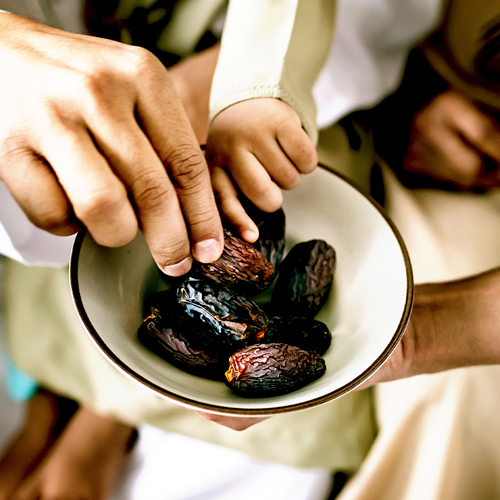 The purpose of the FIG is to gain awareness, knowledge, and sensitivity to the strong connection between nutrition, food, and identity, in order to effectively deliver culturally appropriate nutrition care both within specific communities and within the health care delivery system more broadly. We will learn how the shift toward cultural humility can create a foundation for respectful and inclusive patient and community encounters. We will critically examine nutrition and its relationship to humans and their biological, social, and physical environment. We will identify and evaluate our own worldviews and personal biases with the goal of understanding how these can perpetuate stereotypes within nutrition and health care delivery. Finally, we will examine current events, food programs, and policies contributing to nutrition-related chronic disease, and community-led programs and initiatives aimed at improving health outcomes. The other courses in this FIG will contribute to our understanding of these issues and will lay a strong foundation for people interested in further studies in health, food, nutrition, and/or agriculture. Please Note: Nutritional Science 377 will be online for the Tuesday session and the Thursday sesssion will be in person. Nutritional Sciences 132: “Nutrition Today” — Nutrition and its relationship to humans and their biological, social, and physical environment; current issues and concerns that affect the nutritional status of various population groups. Chemistry 103: “General Chemistry I” — Introduction to stoichiometry and the mole concept; the behavior of gases, liquids, and solids; thermochemistry; electronic structure of atoms and chemical bonding; descriptive chemistry of selected elements and compounds; and intermolecular forces. |
2021fall59 | ||
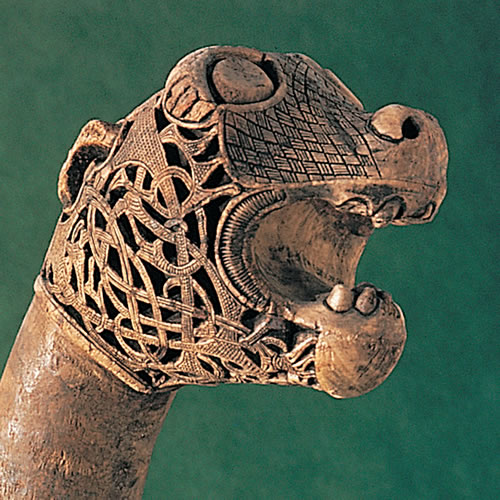 In the main seminar in this FIG, Literature in Translation 235: “The World of Sagas,” we will learn about the Norse people as they expanded through Europe and beyond. We will study their science and technology, environment, mythology, gender, economics, politics and more. This class approaches the Vikings along historical lines and uses both texts from medieval sources and archeological materials. We will explore:
We will discover that as we learn about the medieval Scandinavians, we gain a greater understanding of ourselves and the human condition. This FIG will appeal to students who are interested in learning about the present through the past and those with a specific interest in the Nordic countries (and perhaps topics like black metal music, Skyrim, or media shows like Thor and Vikings). The other classes in this FIG will enhance our examination of these topics. Enrollment in an optional first-semester Norwegian or Swedish class will enhance your understanding of the cultures of the region and is highly recommended. Folklore 100: “Introduction to Folklore” — Surveys folklore in the United States and around the world, with a comparative emphasis on ways in which individuals and groups use beliefs, songs, stories, sayings, dances, festivals, and artifacts to address issues of identity, authenticity, and authority, in complex societies Choose one (OPTIONAL): Scandinavian Studies 101: “First Semester Norwegian” (15543) Scandinavian Studies 111: “First Semester Swedish” (17357) Scandinavian Studies 121: “First Semester Danish” (15063) |
2021fall60 | ||
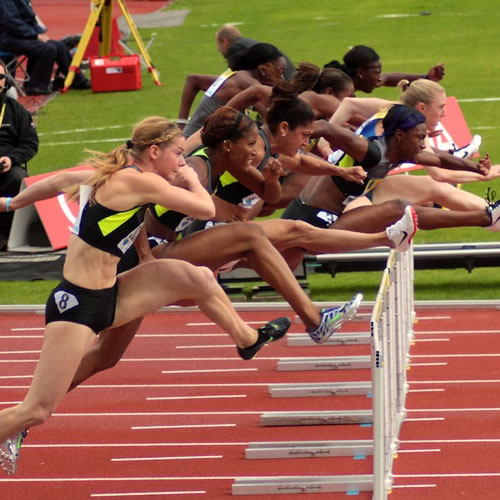 For many years, physiologists have used exercise as a way of studying the limits of human performance. An athlete running as fast as a human is capable of running, or lifting as heavy a weight as she can lift is an excellent way of observing the limits of performance. By studying physiological processes when they are being pushed to their limits, we can learn a lot about these processes—the regulation of the processes, the constraints that they operate under, and how processes may adapt to improve performance. In Kinesiology 115: “The Physiology of Human Performance,” we will be exploring the factors that influence human performance in the context of exercise or performing other physical work. We will examine a number of case studies where the goal will be to determine what the physiological factors are that are limiting performance. We will consider cases of athletic performance, other work conditions, age and developmental issues, as well as injury or other pathological conditions, among many other cases. We will also spend some class time in an Exercise Physiology laboratory where we will collect some data on subjects while they are exercising. We will then use these data to determine some of the underlying physiological processes that are at work during different types of exercise. The other two class in this FIG are well matched with this small seminar class and provide many opportunities to integrate material across different subject areas. Chemistry 103: “General Chemistry I” — Provides an understanding the basic chemical reactions that underlie many physiological processes and allows us to connect these two areas. How are our muscles’ ability to perform work ultimately limited by the underlying chemical reactions in the muscle? Kinesiology 119: “Introduction to Kinesiology” — Allows us to place the physiology that we are exploring into the larger context of the field of kinesiology. How do people use the physiological responses to exercise to help understand the role of exercise and movement in health and disease? Given the course subject matter that we will explore, as well as the paired courses, this FIG is an excellent learning opportunity for students who:
|
2021fall61 | ||
| description | grid | fig |